South Shore Reimagine. Revitalize. Restore.
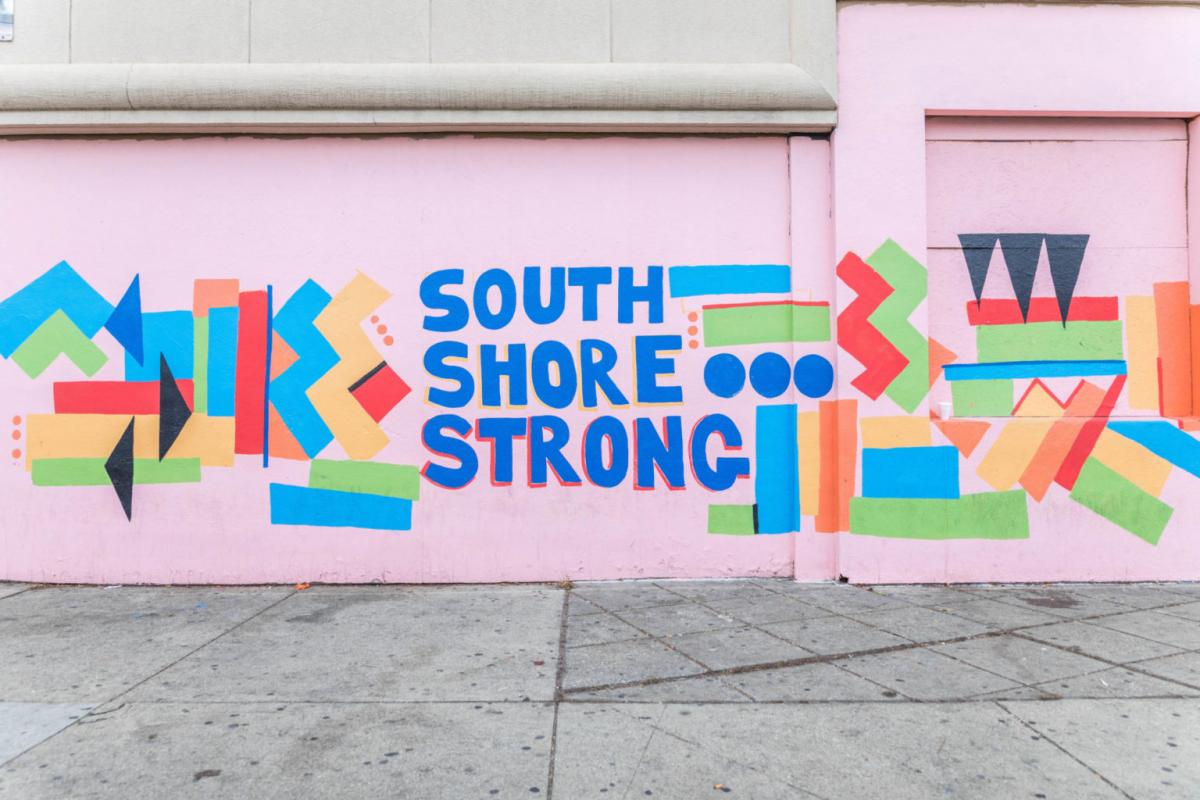
Advisory Committee | Planning Phase, 2020-2022
The Advisory Committee for the South Shore Quality-of-Life Plan is the governing body for the planning process. These South Shore residents mobilized their networks to participate in a series of community planning summits, co-lead working groups and oversaw the planning process.
Resident Acknowledgement | Planning Phase, 2020-2022
|
|
Brandon Patterson - Aaron Henderson - Ana Marija Sokovic - Andrea Yarbrough - Angela Jones-Orokoh - Angela Orokoh - Barbara Lee - John Lee Camesha Jones - Carlos N Randolph - Carol Adams - Christopher Schneider - David Robinson - Deborah Harrington - Diana Collymore - Elfriede Wedam - Emily Rhea - Erick Johnson - Ernest Sanders - Frances Lake-Black - Gwendolyn Kinard - Hather Parish - Jakina H. - Jeanette Foreman - Julia Perkins - Kenneth Litzsey - Kiara Hardin - Kiela Smith-Upton - Kim Mbayiwa Luckette - Lanita Lewis - Marica Talbert - Mary Jones - Mike Strode Paulette N Fitts - Raissa Allaire - Rashada Dawan - Robye Scott - Teyonda Wertz - Torrey Cooper - Towanda S Macon - TS Douglas |
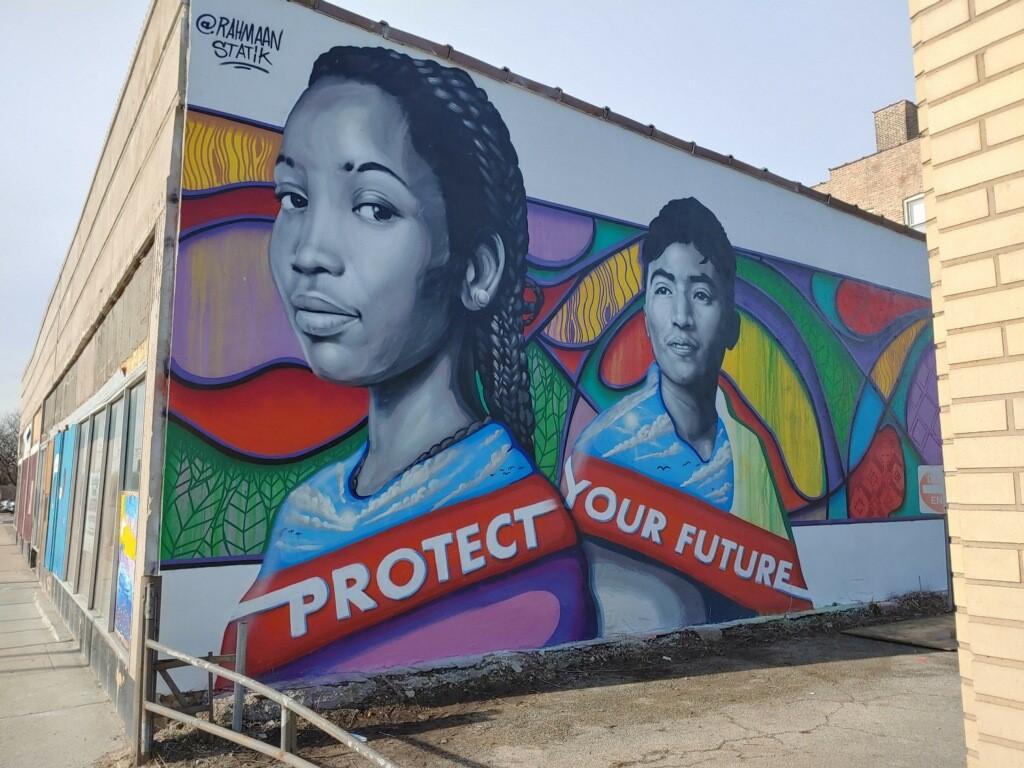
We envision South Shore as a dynamic, robust, sustainable community reflecting our present vibrancy and future potential. The South Shore Quality-of-Life Plan (QLP) reflects the wisdom and insights of all stakeholders- neighbors, business owners, community and faith-based institutions, educators, elected officials, and the many allies in government, foundations, and social service based here in our community. The resultant document describes the objectives and strategies necessary to achieve our shared goals of revitalization and renewal and the advocacy required to achieve them.
- Creating a sustainable economy with new opportunities for community wealth building
- Improving access to homeownership, especially for first-time homebuyers already living in South Shore
- Promoting public safety through coordinated efforts and collaboration
- Celebrating cultural and artistic brilliance
- Developing new leadership through support and promotion of academic achievement
- Preserving, protecting, and promoting natural and physical resources
-
Resident Engagement
- Economic Development
- Education
- Housing
- Community Stewardship & Beautification
- Health & Wellness
- Arts, Culture & Entertainment
- Public Safety
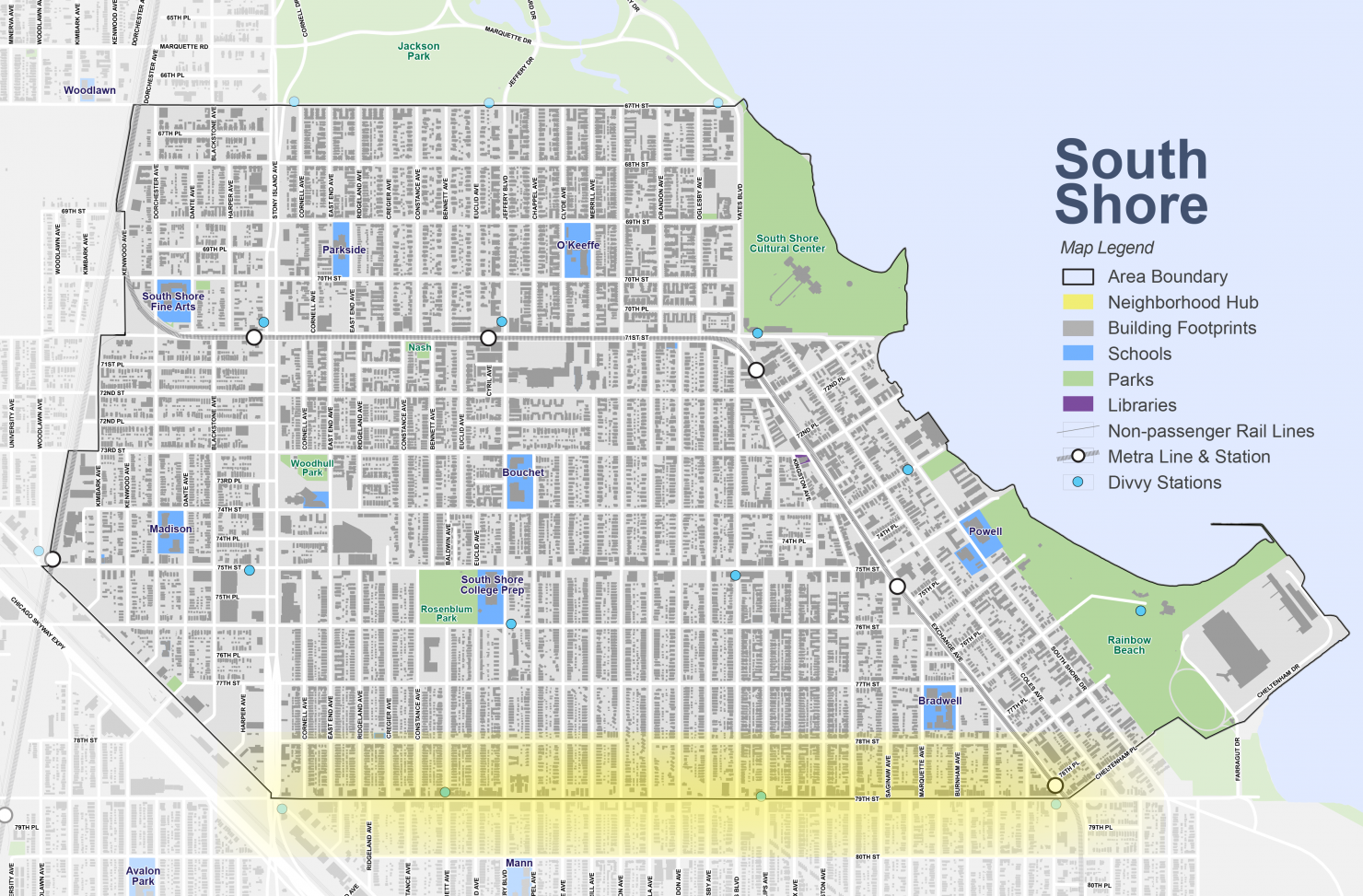
Map courtesy of City of Chicago DPD from INVEST S/W
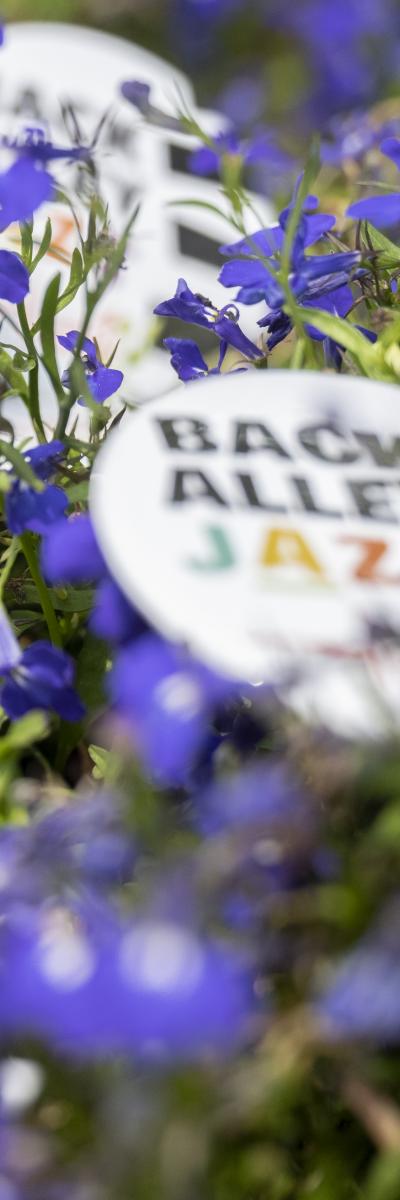
Most discussions on the amenities of South Shore naturally begin with our natural and recreational spaces. Lush, green public parks and spacious beaches, for many just minutes away by foot ;for others, for others, these spaces are just a short trip away by car or convenient public transportation. Outdoor experiences like nature sanctuaries, tennis, basketball and handball courts, bike trails, and swimming are available at no cost. The two golf courses in South Shore are rated among the top municipal courses in the Chicago area. Further, South Shore has one of the highest tree canopies of any neighborhood in Chicago. Cultural amenities also abound. The quietly-stated elegance of the South Shore Cultural Center, with its restored, historic décor, has provided the perfect backdrop for a host of world-class music concerts, art exhibitions, and other cultural and political events. The Stony Island Arts Bank is a recent addition to the cultural landscape and attracting global acclaim.
These jewels of the South Shore environment lay the foundation for a vision of a community standing as a Center for Black Excellence, a continuously-evolving model for a predominantly-Black urban neighborhood, and a hub for artists, creatives, and entrepreneurs involved in innovative work. Fueled by the dynamic character of a neighborhood with a population over 93% Black, South Shore is a microcosm of Black America: a community that is rich with history, teeming with creative energy, with people from every level of income and education, many religious faiths and nationalities, a distinctly Black character and rhythm open to all, living together side-by-side, some of them for decades.
Besides these natural, recreational, cultural, and historical amenities, South Shore has everything Chicago lakefront neighborhoods are known for- proximity to downtown, housing with varied architectural distinction and different of many types and levels of affordability, and a variety of available transportation options, shopping, and services. Change for South Shore is inevitable, as the Obama Presidential Center will undoubtedly have far-reaching effects on housing, economic development, public land use, public transportation, traffic, and other factors impacting both present and future livability.
Perhaps the most valuable South Shore asset is the network of talented and experienced people, community organizations representing every section of the community, local businesses, elected and other government officials, together with concerned residents, all committed to the transformative revitalization of the community to which they are connected.
The community-resourced effort to improve the quality of life for all in South Shore has already begun, guided by a vision encompassing both the assets and resources presently available, and potential yet untapped.
Quality-of-Life Plan
The following document is the product of two years of research, fact-finding, and discussions involving stakeholders from all sectors of the community. It describes the framework, strategies, and resources required to implement and sustain the quality of life envisioned by a large portion of the South Shore community.
For each of the components of our revitalization work listed above: this Quality-of-Life Plan (QLP) outlines the strategies, success markers and deliverables, and a brief analysis of specific challenges faced. Historical context is also provided using data and analysis of trends in market conditions, demographic changes, and other relevant factors.
The QLP will be merely words on paper or computer screen without robust engagement and participation of South Shore residents from every sector of the community. As previously alluded to, the people of South Shore have a tremendous wealth of skills, experience, and expertise that can be amplified to ensure adequate resident engagement for all areas of concern previously discussed.
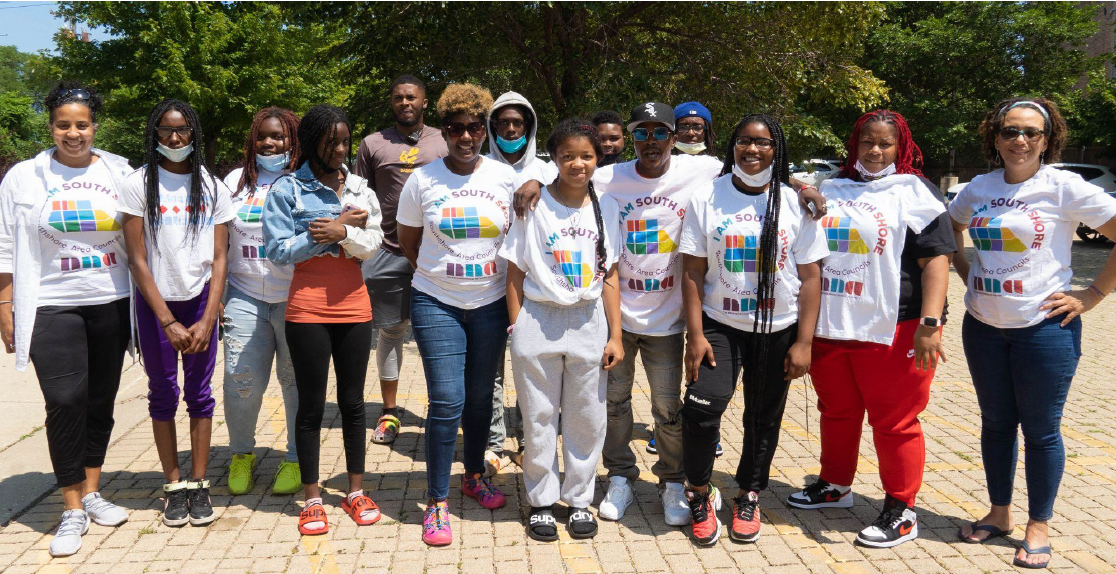
Resident Engagement
Resident Engagement Goal:
Residents are involved in and knowledgeable of all aspects of the South Shore Quality-of-Life Plan and other South Shore improvement efforts. We will support residents through existing structures, including area councils, block clubs, and local advisory committees. When necessary, we will create new structures to ensure all residents across the entire community have equal opportunities to engage in re-shaping South Shore.
Our Measures of Success:
- More area councils, along with noticeable improvement in area council activity and engagement with neighbors
- Greater number of residents trained and now participating on Local School Councils, Park Advisory Committees, a newly-created Transportation Advisory Committee, and other committees involved in oversight of public agencies and services
- More forums for elected officials and community organizations to hear from residents
- Greater engagement between community representatives and elected officials resulting in productive meetings
- Launch a South Shore Resident Community Fund
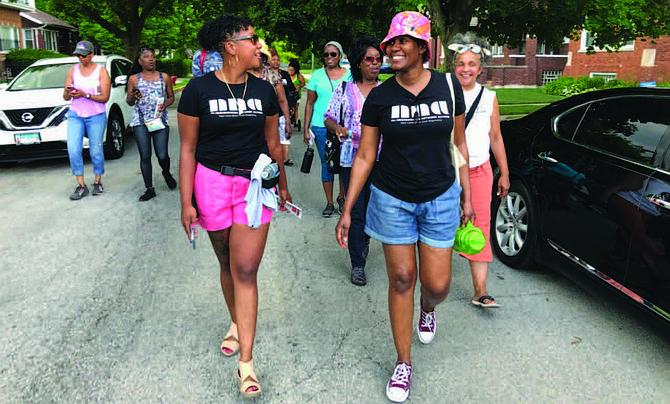
South Shore has
12 active area councils
comprised of numerous block clubs
Residents sustained a 6-year organizing campaign to bring attention to the lack of access to low-cost, healthy food
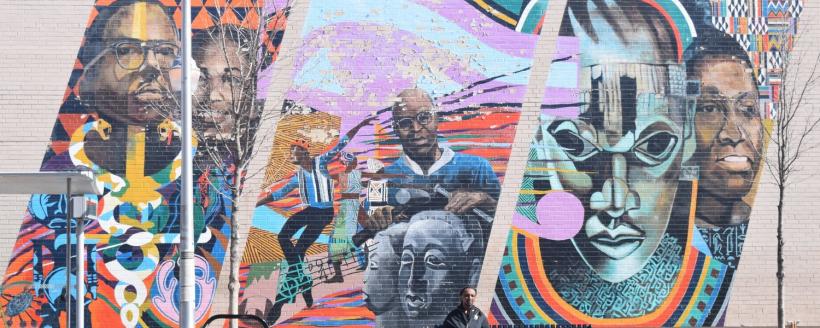
75% OF RESIDENTS HAVE ACCESS TO THE INTERNET
BUT THE CITYWIDE AVERAGE IS 83.5%
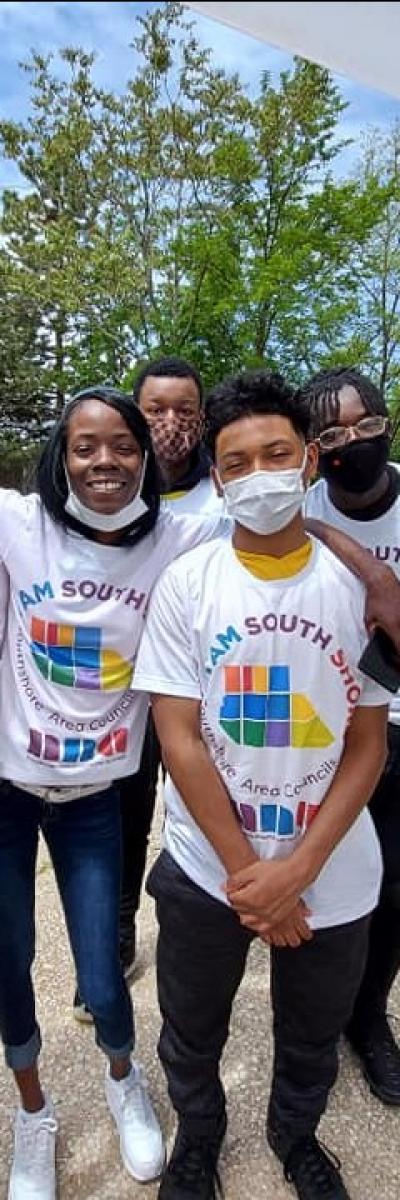
Key local factors
For years, various groups in South Shore have worked on building a strong resident engagement infrastructure connecting neighbors, businesses, and community-based institutions. Numerous blocks are organized into twelve (12) area councils comprising all sections of the neighborhood, serving as the foundation for effective, targeted resident engagement on specific areas of concern. The Chicago Park District’s Park Advisory Councils (PACs) provide opportunities for residents to have input into development and maintenance of their nearby parks; the Chicago Public School’s (CPS) Local School Councils (LSCs) give parents and other community members a voice in how schools operate in their area. In addition to LSCs, the once-active CPS South Shore Community Advisory Committee provides an avenue for input into how schools in South Shore serve the community.
Specific events, issues, and ideas have prompted both informal and organization-led coalitions of groups and residents into collective action, such as: preventing the closure or sale of the South Shore Cultural Center; ending our status as a “food desert” leading to the opening of the Local Market grocery store at the former site of Dominick’s Finer Foods and subsequently defending the supermarket against vandalism during the civil unrest of summer 2020; and the creation of the wall mural at 71st & Jeffery Boulevard by young artists and volunteers. These examples of community engagement are part of a long history of South Shore activism whose leadership is developed and based in the community.
STRATEGY 1
- Creation of a South Shore Resident Community Fund to fund local neighborhood projects administered by area councils
- Convening a community summit focused on providing foundational organizing training and support for residents
STRATEGY 2
- Engage with and support area Park Advisory Councils (PACs)
- Engage with and support the Local School Councils (LSCs) of schools in South Shore
- Re-activate and support the CPS South Shore Community Advisory Council
- Create a Community Transportation Advisory Council, providing an avenue for residents to have input in policies, practices, and services from the Chicago Department of Transportation, Chicago Transit Authority, and METRA affecting South Shore
- Create a committee to engage and coordinate with those conducting research and studies conducted in-or-about South Shore
STRATEGY 3
- Convene community listening sessions throughout-out all parts of South Shore
- Develop and implement a marketing campaign to increase resident participation in the annual South Shore Community Summit
- Promote virtual & physical community hubs providing residents with information and assistance in accessing resources
- Create a website featuring an organizational directory map of resources and training opportunities (financial literacy, workforce development, etc.) available to residents
- Support residents' ability to engage with each other online (e.g. obtain low-cost, reliable internet access/devices, non-profit geek squad, digital literacy trainings/workshops)
- Support residents with online job trainings
STRATEGY 4
- Create a crisis/emergency response plan for South Shore to serve as a blueprint for response to future crises and emergencies
- Identify and strengthen resources for community-based responses to the ongoing COVID pandemic
- Identify and engage with local and citywide partners to identify and fill gaps in resources available for community crisis/emergency response
STRATEGY 5
- Engage with governmental agencies and elected officials to create and implement methods to ensure development projects in South Shore create the greatest value and cause the least harm to residents.
- Host regular community forums with elected officials to review and provide input to development projects in South Shore.
- Create a list, available to the public, of community-based initiatives and projects receiving funding from public sources (City, County, State, or philanthropic foundations).
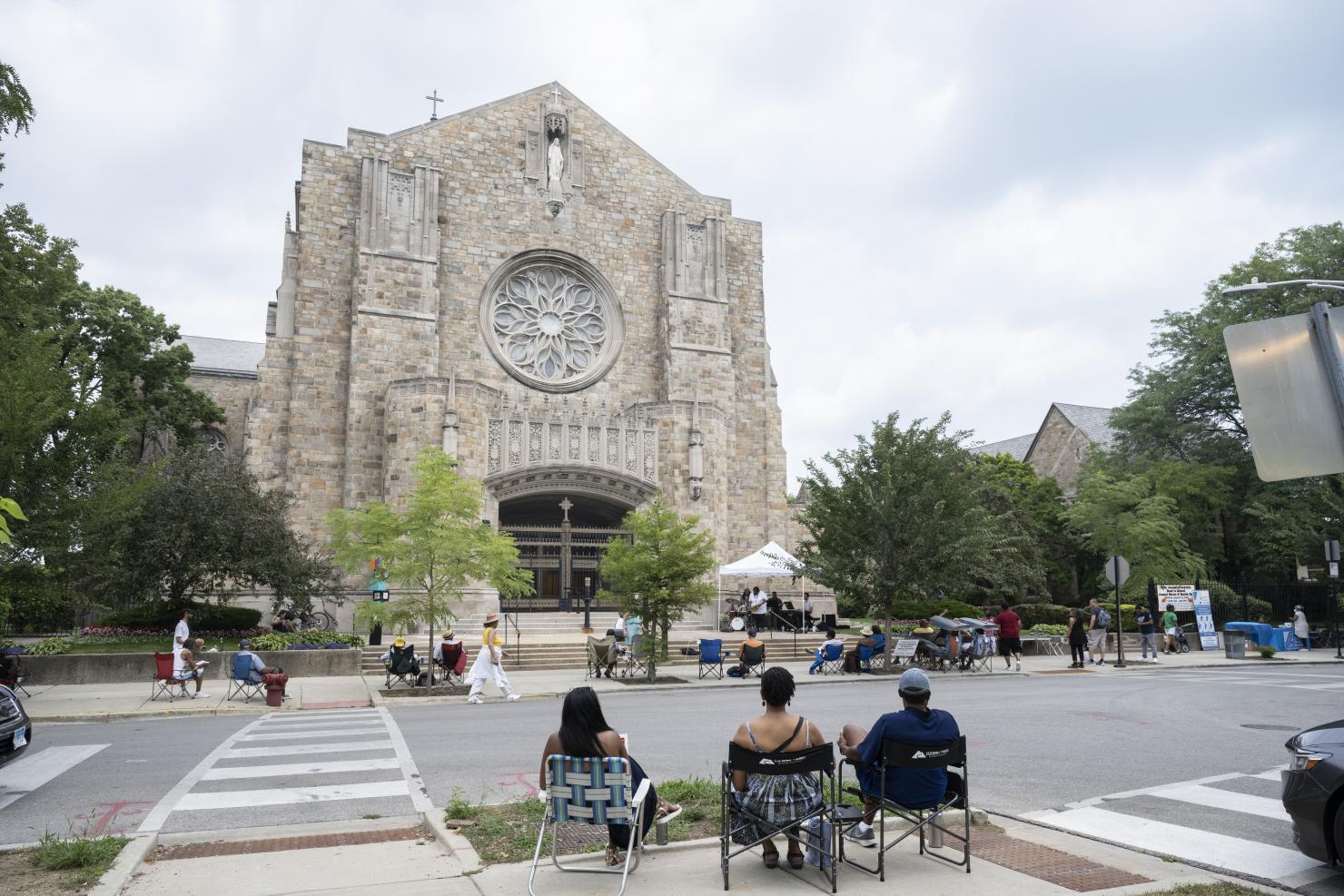
Intergenerational Peace Plaza
Positive Impact to our community
Enhance community connections
- provide shared experiences for children and their caregivers
- support well-being and social cohesion
- develop strong sense of community
- re-establish our elders role as mentors—imparting knowledge, wisdom and experience is brought forth/shared and helps connect, increase companionship between elders and youth
- increase civic engagement
- build community pride
- facilitate neighborhood self-sufficiency
Improve community physical heath
- improve air quality to generate cleaner air
- raise physical activity levels, focus on reducing obesity rates
- increase vitamin D levels
- lower blood pressure
Increase mental health benefits
- offer beauty and respite from day-to-day stressors
- address social problems collectively through discussion and ongoing programming
- support youth development
- children experiencing elders in active, social environments can help reduce the fear and break down negative stereotypes of the aging process
- social support for older adults is beneficial in enhancing self-esteem, well-being, and can reduce symptoms of depression (our South Shore community has a large population of those living alone)
- reduce social isolation
Turning empty lots in South Shore into vital resources that can be used by residents to connect with each other, deepen relationships, and address community safety issues
Beautiful community green space/plazas with modern-day programs/activities that respect our heritage, while supporting our goals to be a sustainable, vibrant community. We want to create an Intergenerational peace sanctuary – an artistic, beautiful space which reminds our community to have FUN with one another while reflecting on the challenges our community MUST overcome. This space has a water feature around the plaza which is in center of the garden, Three pathways have inspirational wording that form the peace sign.
Intergenerational Contact Zones (ICZ) serve as spatial focal points for older adults and younger generations to meet, interact, build trust and friendships, and work together to address issues of local concern.
ICZs would include:
- free, open, community outdoor wi-fi network
- lamp posts and unique urban seating
- artistic bike racks
- local, community artist works are displayed throughout
- low allergy producing foliage surrounding the fencing and 3 pathways
- gabion retaining walls (rocks inside wire- fencing) as the perimeter and as seating in some areas
- permeable paver pathways mimic Chicago brick
- vertical water features powered by solar energy
- gathering space for the community
Community Involvement
Local community and neighborhood organizations ownership/involvement for the structured activities/events in the plaza:
- Programming which encourages intergenerational exchanges appealing to ALL generations and abilities
- outdoor/nature exploration
- social justice, equity and inclusion discussion
- recreational activities for ALL ages (arts and crafts, reading, cooking classes, music, board games)
- Creating mechanisms for continued community participation & feedback
Economic Development
Economic Development Goal:
Our goal is to transform South Shore into the Community of Choice to live, work and play in Chicago. Our dual approach of scaling local businesses and attracting new, diverse enterprises will create a high-end Black experience and atmosphere uniquely identified with South Shore. New businesses providing living wages to local residents will enhance many aspects of livability. By doing all of the above, we will foster an economic environment benefiting business owners, workers, and all residents of the community.
Our Measures of Success:
- Acquisition of vacant and underutilized properties along the commercial corridors
- Human capital aligned with job pools
- Wealth-creation through entrepreneurship, investment, small business development
- Reduced vacancy rate along main commercial corridors
- Increase the walkability score in South Shore
- Creation of new jobs based in South Shore, with positions filled by community residents
- Attract new anchor institutions
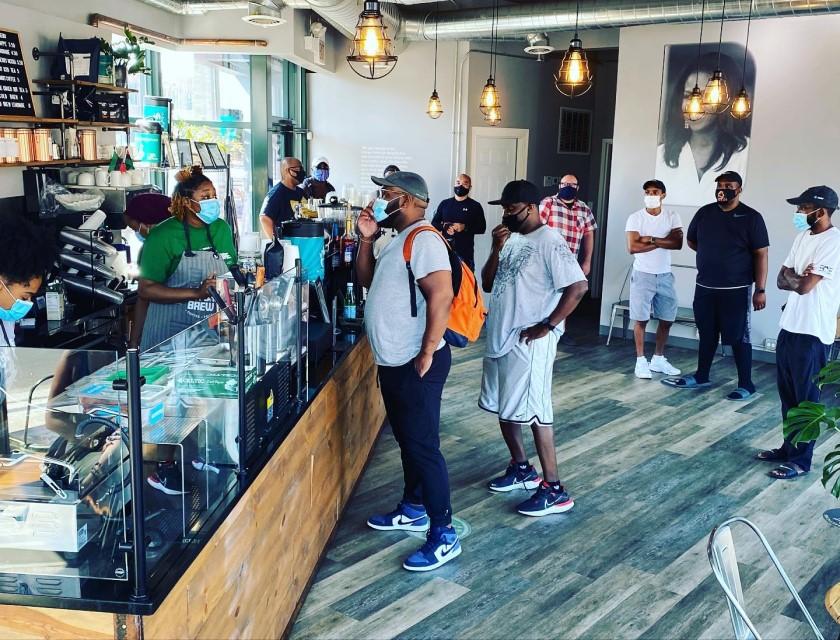
We can support more local restaurants:
$29 million
is spent anually by South Shore residents on restaurants and dining outside the community
We have spending power: $200 million in resident spending leaves South Shore each year
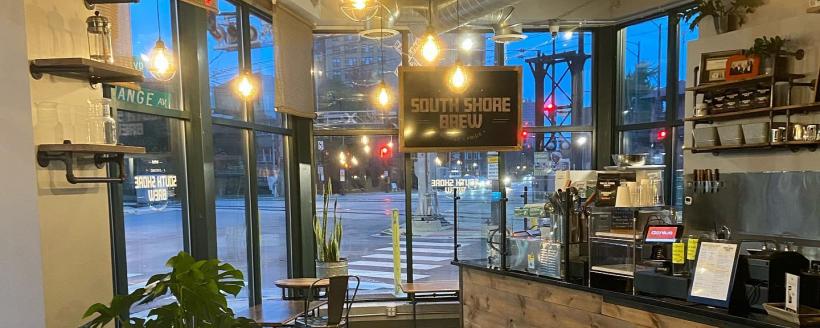
We could increase this even more:
44% earn less than $25,000 a year
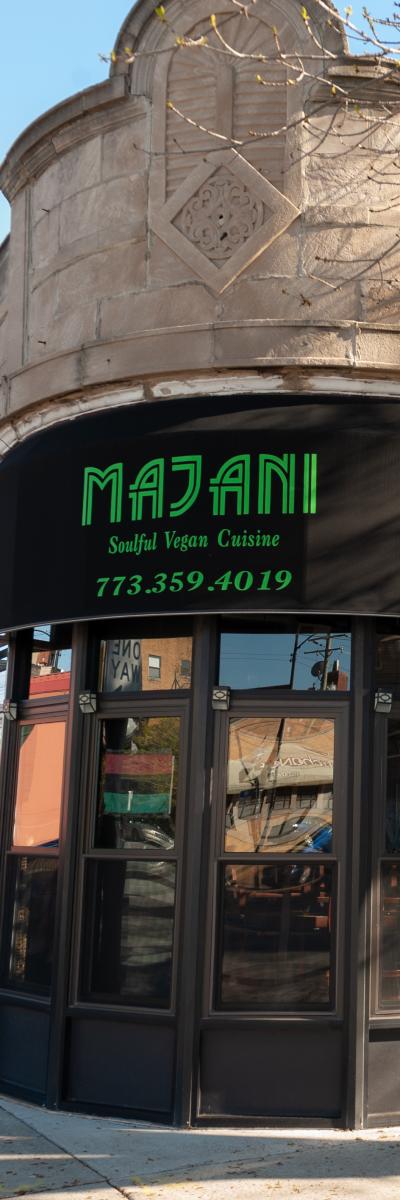
Key local factors
One key factor to creating a sustainable economy for South Shore is the revitalization of the commercial corridors, 71st, 75th, and 79th streets, along with Stony Island Avenue and Exchange Ave. In 2020 the City of Chicago published the South Shore Corridor Study, categorizing these commercial corridors and arteries. By attracting institutions and corporations serving as anchors for development, we can create a thriving economic district that can both benefit current residents and attract new residents.
The revitalization of South Shore's commercial corridors is also essential in encouraging residents to spend more of their shopping dollars within the community, a necessary factor in South Shore’s economic viability. Data shows an estimated $200 million dollars annually is spent by residents outside of the area, roughly $29 million alone spent on restaurants and dining.
Broad-based community participation is an important part of our placemaking process, supported by effective utilization of local community assets. This process helps to create and sustain quality public spaces, walkable streets, and helps ensure adequate availability of public services like utilities, broadband, public safety, and sanitation. This both contributes to the local economy, and fosters personal happiness and well being for all sectors within the neighborhood. Our primary focus is developing a community where the bulk of resident spending, economic power, and talent go toward enhancing the lives of South Shore residents.
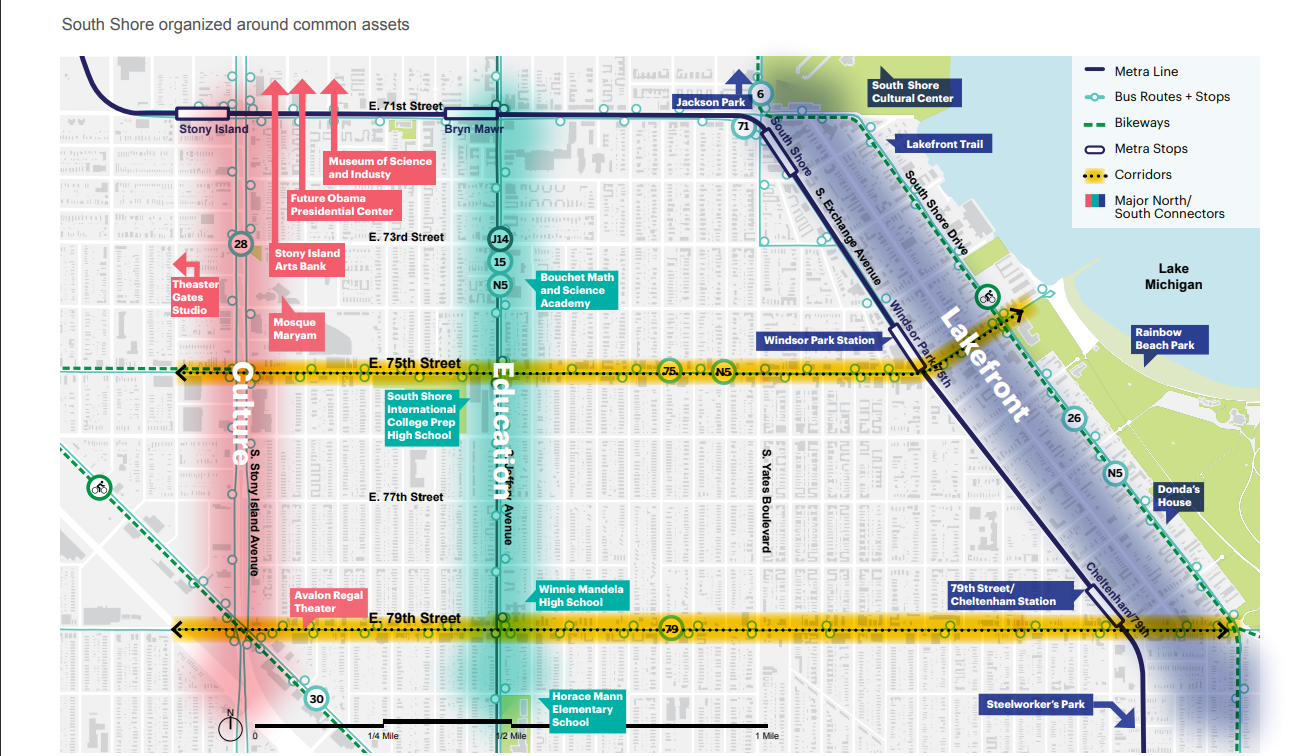
Map courtesy of City of Chicago DPD South Shore Corridor Study
STRATEGY 1
Create a Community Wealth Building strategy
- Create Community Investment Vehicles (CIV) for community stabilization through wealth building and revitalization of community assets through a shared ownership model
- Build broader business ownership through worker cooperatives
- Build broader homeownership through housing cooperatives
- Increase commercial property ownership by residents
STRATEGY 2
Support current and foster development of new businesses
- Create and promote “Seeding South Shore” small business impact fund
- Launch small business incubators to help start a business
- Develop a robust M/WVBE certification program
- Reduce chronic vacancies
- Acquire funding for commercial corridor modernization, façade enhancement, streetscape and beautification projects
STRATEGY 3
Develop and implement community-led place-based neighborhood revitalization strategies
- Create policy recommendations to address underlying barriers to capital and private investment
- Match strategy to local context: activity within South Shore and how it connects to the regional economy
- Identify and support place-making projects across the community
- Identify and support TOD projects with support of the City’s Connected Communities ordinance
STRATEGY 4
Provide skills training and employment opportunities for local residents
- Create a skills training incubator for the construction industry
- Create a Black real estate developers program
- Develop workforce development programs for South Shorens of all skill levels within high-growth and high-demand industries
Multi-EATertainment Venue
PLAN STRATEGIES ADVANCED THROUGH THIS PROJECT INCLUDE
Economic Development
- Assess the redevelopment potential of vacant and underutilized commercial properties across South Shore
- Create a community center/gathering and office space
- Transform South Shore into a Black Business Arts & Entertainment District/Corridor (like Greek town)
- Create a restaurant district with cuisine from all over the African Diaspora
Arts, Culture & Entertainment
- Utilize and support real estate acquisition and development projects focused on arts, culture, and entertainment
- Coordinate and facilitate South Shore experiences that will draw visitors into the community
Inner City Entertainment (ICE) is proposing a multi-EATertainment venue at the corner of 71st Street and Jeffery Boulevard that can become a entertainment hub and central gathering place for South Shore. This project presents an opportunity to develop South Shore as a dining destination for residents from across the City, capturing some of the $29 million that leave annually, and also generating revenue from folks who live outside South Shore. This will also create opportunities for entrepreneurs, create jobs and increase pride in the community.
Operating as Inner City Entertainment (ICE), South Shore Commercial Properties LLC is developing from the ground up a multi-EATertainment venue at the corner of 71st Street and Jeffery Boulevard. This 47,000 square-foot complex will include four distinct experiences under one roof: Cinegrill - a 7-screen, dine-in cinema; Odessa’s Kitchen - a full-service Creole restaurant and retail marketplace; AJ’s - an 8-lane boutique bowling center, and Penthouse 71 - a rooftop patio for events. The development will generate significant economic impact including workforce development in the hospitality and culinary industries; 75 temporary construction jobs and 300 permanent jobs; and unlimited B2B opportunities for minority and women-owned businesses.
Thrive Exchange
PLAN STRATEGIES ADVANCED THROUGH THIS PROJECT INCLUDE
-
Increase Home Ownership
-
Revitalize Retail Corridors
- Provide Needed Medical Services
- Quality affordable housing
- Attract Quality Retail and Dining Establishments
- Reverse Population Decline
- Transit-oriented Development
-
Construction of 70+ units of quality workforce housing
-
Ground floor retail on both sides of the street
-
Construction of 24 new condominiums
-
Adaptive re-use of the historic Ringer Building into a new, 23,000 sq. ft. Federally Qualified Health Center
-
Purchase and transformation of the beleaguered Star Plaza strip mall for desirable commercial uses
-
Investment in area residential in-fill with the help of South Shore-based developers
-
Streetscape and placemaking in coordination with the Chicago Department of Transportation
Education
Education Goal:
South Shore’s neighborhood public schools will be the education of choice for those living in and around our community. We will support our local schools to increase academic achievement and provide the social-emotional support needed for families, staff, and students by also addressing conditions needed for effective learning, such as high-speed internet connectivity, Out-Of-School Time opportunities, and public safety.
Our Measures of Success:
- More students enrolled in South Shore public, parochial, and alternative neighborhood schools K-12, with particular emphasis on families relocating to South Shore
- Noticeable improvement in the number and quality of post-secondary options for all South Shore students
- Increasing the number of out of school time activities for area youth
- More learning opportunities for adult residents and life-long learners
- Greater access to broadband internet and computers for families of school-aged children, post-secondary, and graduate students
- Reestablishment of the South Shore Community Action Committee
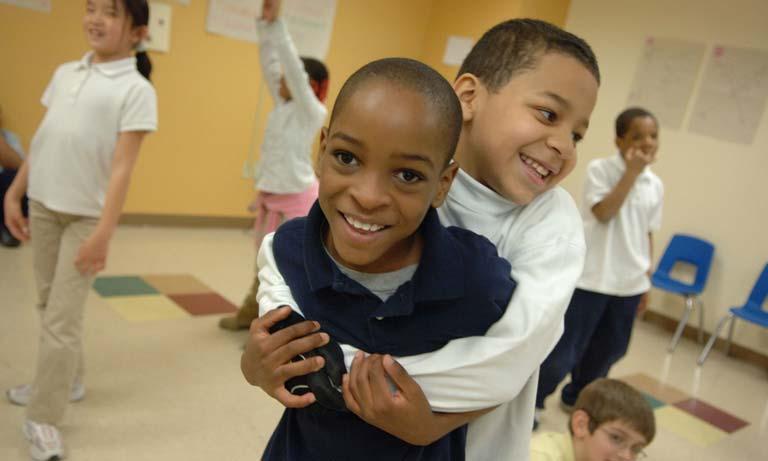
My CHI. My Future.
presents South Shore with an opportunity to
strengthen the youth-serving ecosystem
South Shore neighborhood schools can be schools of choice again

South Shore leaders, organizations and residents are
coming together to support south shore schools

Key local factors
A sustainable quality of life in South Shore requires we have the resources for the complete range of our educational needs, with a full spectrum of opportunities suited for school-age children, young adults seeking job and skills training, and older adults seeking career advancement. Coordinated, well-financed responses are required to meet the educational needs of the community, both long and short-term, such as: improving the quality of area public schools, establishing and promoting out-of- and after-school programs, and establishment and promotion of adult jobs/skill training programs, together with efforts to increase public safety and expand access and affordability to broadband internet.
South Shore is now one of six focus communities selected to participate in Chicago Mayor Lori Lightfoot’s Youth Initiative, with the target to connect every young person in Chicago with engaging and safe out-of-school programming in their neighborhood. Various community-based groups will work with My CHI. My Future. to build a network of caring adults to engage with and support youth living in South Shore. Utilizing already-existing networks and available resources, these organizations will organize and offer various activities to supplement young people’s educational experiences, such as community walks, tutoring, sports programming, etc.
STRATEGY 1
- Reestablish the South Shore Community Action Council (CAC) bringing together all community stakeholders together with mission to develop a holistic action plan to support area schools
- Create a South Shore Education Network including non-profits, universities, and businesses to support curriculum development aimed at attracting families to South Shore to enroll their school aged children in area schools
- Create and implement outreach activities directed at changing the perception of safety in South Shore schools
STRATEGY 2
-
Expand post-secondary options: college, trade school options, and other non-traditional options
-
Improve families’ access to computers and broadband internet
-
Coordinate and increase academic-focused Out-of-School Time (CPS) activities through My CHI.My Future.
-
Bring Parent University and/or other parent engagement and leadership programs to South Shore
-
Expand or launch new computer literacy programs
-
Integrate arts and cultural opportunities with schools
STRATEGY 3
- Expand post-secondary options like college, trade school, and other jobs/skill training programs
- Coordinate and increase academic-focused out of school time activities through My Chi My Future
- Locate and bring university-run and other parent engagement and leadership programs to South Shore
- Expand and increase access and affordability of computers and broadband internet to area families
- Expand/launch new computer literacy programs
- Support existing and newly-created intergenerational learning opportunities
- Integrate arts and cultural opportunities with schools
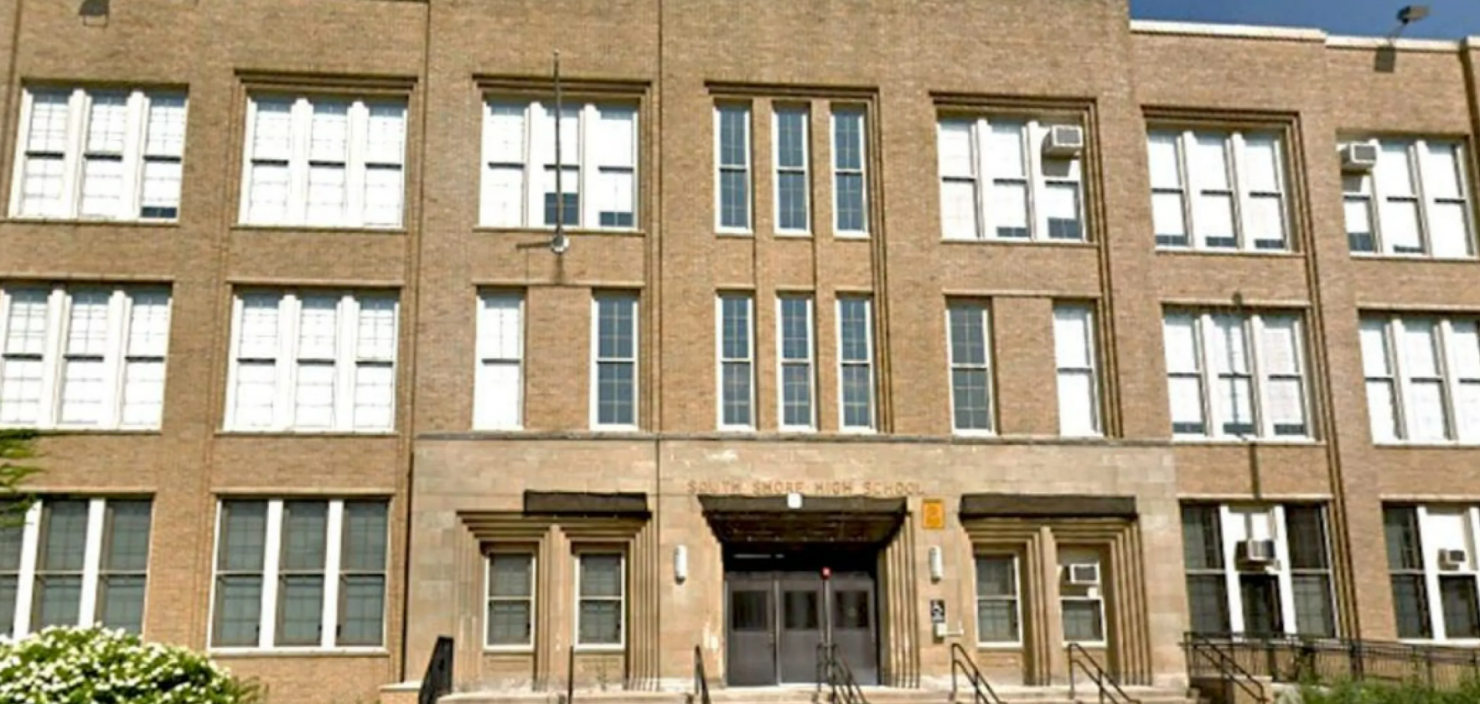
South Shore Youth Leadership & Sports Complex
PLAN STRATEGIES ADVANCED THROUGH THIS PROJECT INCLUDE
Education
- Coordinate and increase all Out-of-School Time (CPS) activities through My CHI. My Future.
- Coordinate and increase academic-focused Out-of-School Time (CPS) activities through My CHI. My Future.
- Support youth sports infrastructure to increase youth development
Health and Wellness
- Host community events that promote physical, mental, and emotional health
- Work with schools, youth-serving institutions, senior centers, and senior serving organizations to assess the scope of the mental health needs
- Work with local primary care physicians, schools, and community-based partners to support efforts to increase the positive healthy habits of South Shore residents
A youth center with indoor space for sports year-round would allow for an increase in the number of youth served during the year and provide space for non-profits that offer sports-related programming with office space would strengthen the youth-serving ecosystem in South Shore and expand out of school activities.
Research suggests that a key transition for urban youth comes at ages 13-14, in regards to arrests and incidents of violence. Providing programming and space for youth to develop as leaders through sports at ages as low as 10, would support them and build strong relationships with caring adults prior to that key transition period.
The South Shore Youth Leadership & Sports Complex would provide:
- Multi-sport fields/space
- Youth leadership development
- Out-door green space
- Space for youth to gather
- Office space
- Utilization of renewable energy
Bringing these all into one Complex would align with the City of Chicago's My CHI. MY Future. initiative, allowing easier coordination and alignment out-of-school time activities for all youth in South Shore. The Complex could serve as a community hub with academic support that aligns with sports programming and youth leadership development.
Housing
Housing Goal:
We will stabilize the South Shore housing market by increasing homeownership and by providing support for renters, homeowners, and residents who wish to purchase or keep their homes, but are unable to do so due to structural barriers they face.
Our Measures of Success:
- Improvement in the level of owner-occupancy, from 22% to 30% within five (5) years, with emphasis on increasing the number of Black 1st-time home buyers and ownership among existing residents.
- Fewer South Shore homeowners who are cost burdened
- Greater access for South Shore residents to alternative owner-occupancy methods, such as housing cooperative
- Reduction in level of absentee ownership
- More Black real estate professionals operating in South Shore
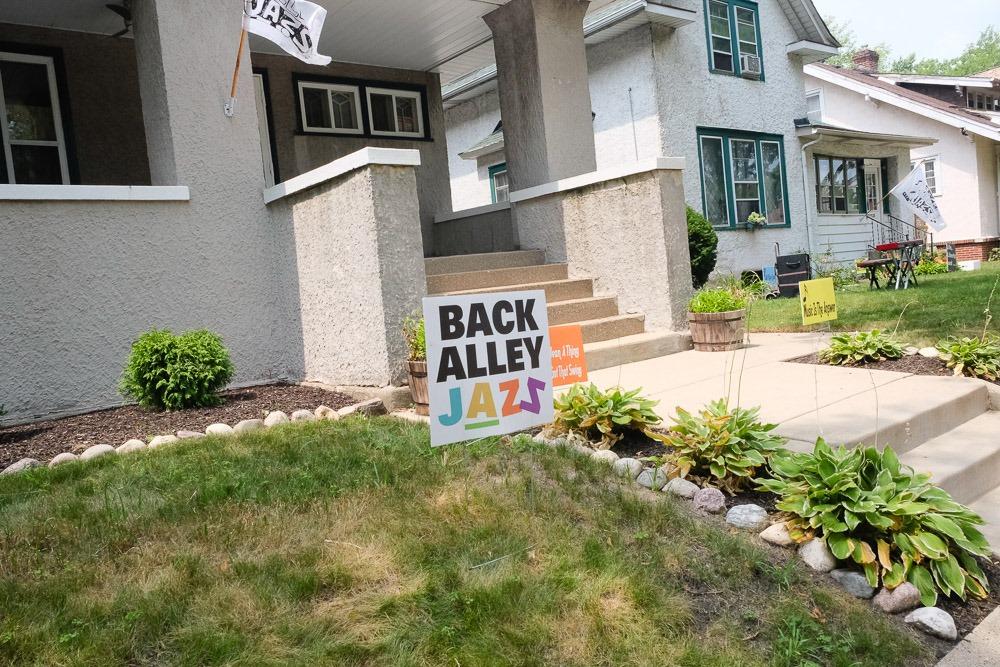
22% of homes in South Shore are owner-occupied
single-family homes are 40%
of the total housing stock in South Shore
1/3 of South Shore homeowners are paying over 30% of their income for mortgages
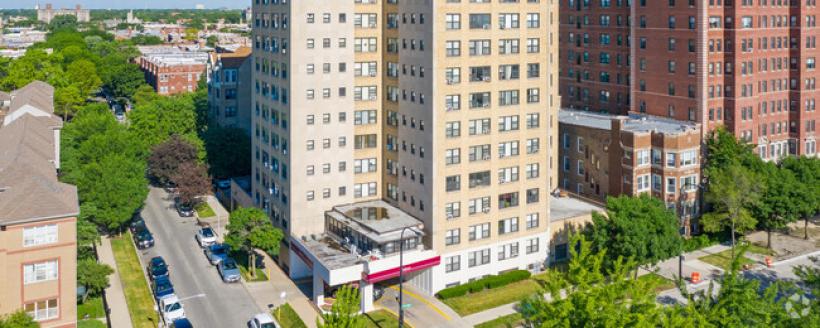
60% of renters are cost-burdened
paying more than 30% of their income on housing costs

Key local factors
To provide a comprehensive analysis of the many factors threatening putting pressure on the stability of South Shore’s residential housing environment. The South Shore Parcel Survey (SSPS) was conducted in 2021 by a partnership comprised of community organizations and Chicago research institutes. The neighborhood-led study is based on a survey of nearly 8,600 South Shore buildings and parcels, and analyzed using 20 publicly available datasets. The five key findings of the SSPS help set a framework to understand the state of South Shore housing, and develop objectives and strategies to solve problems identified.
Among its strengths, South Shore has an economically diverse population, with a large existing stock of single-family homes and cooperative apartment buildings, offering potential as a Black middle-class enclave for residents and families seeking cultural/recreational amenities and proximity to the lakefront and downtown Chicago. Increased public investment and community planning see a variety of housing, economic development, and community planning initiatives underway in South Shore. Community leaders who see a narrow window of opportunity now open are taking an active role in coordinating and overseeing plans to ensure South Shore’s future includes a stable and viable housing environment.
But South Shore is not without housing challenges. High property vacancy rates create a void inside the South Shore housing market, often filled by speculative-minded investors from outside the community. While South Shore is known as a densely-built residential neighborhood, vacancy rates of 13+% give outside investors with quick access to required capital opportunities to acquire many vacant, often distressed properties. Besides the adverse effects of speculative activity on housing affordability, the short-term objectives of many outside investors are not conducive to fostering stability in South Shore’s housing market. The bulk of the South Shore rental market is geared toward lower-income renters, whose inherent vulnerability to market forces creates instabilities for individuals and families reverberating across the entire community. Factors such as having the highest number of federal housing subsidy vouchers of any Chicago neighborhood, and 25% of rental units paid for through subsidies, puts pressure on developers and landlords seeking to appeal to more middle-class renters. Condominium buildings and owners faced with deferred maintenance, inadequate reserves, higher-than-average taxes and insurance costs, and disproportionately low access to capital are at-risk of being exploited by investors from outside the community. Low levels of homeownership shape the composition of South Shore’s population, and ability of community residents to contribute to economic development. Standing at between 22-24% owner occupancy, economic slowdown resulting from the pandemic put many already-struggling South Shore homeowners into more financial peril.
The SSPS provides the context for objectives and strategies outlined below, describing effective means to meet the challenges of limited affordable housing options, barriers to homeowners for minorities, and historic lack-of-investment and access to credit affecting the stability of South Shore’s housing market.
STRATEGY 1
- Stabilize and preserve existing housing stock, such as through MMRP
- Support existing renters to become homeowners and attract new homebuyers
- Create a South Shore down payment assistance program
- Provide incentives education, counseling, and other support for owner-occupants to stay in South Shore
- Assist seniors to age-in-place, and secure a Senior Tax Freeze
- Establish a South Shore Community Land Trust
- Put publicly owned vacant land or buildings back to productive use
STRATEGY 2
- Create a renter’s association for South Shore residents
- Support eTOD projects to ensure availability of accessible affordable housing
- Advocate for policies decreasing absentee owners and vacancy
- Create a South Shore-specific Right to Counsel Program
- Develop and implement a focused South Shore preservation strategy
- Slow the pace of potential property sales by current owners leasing to CHA HCV tenants
- Ensure physically- and mentally-healthy South Shore housing units
STRATEGY 3
- Extend the Woodlawn Tenant First Right of Refusal pilot program
- Provide home improvement grants and community succession planning strategy for long-time homeowners
- Create/support shared ownership such as cooperatives and condominium ownership
- Support Black real estate professionals, with particular emphasis on increasing the number of Black appraisers
- Address bias in residential appraisals in South Shore
- Establish “community development guidelines” for expanding and sustaining housing stock towards the QLP vision
- Increase knowledge on real estate/properties as assets to build generational wealth
STRATEGY 4
- Establish a community condo watchdog to educate, partner with and empower community residents around risks and investor exploitation
- Expand legal and technical assistance for sustainability of condo owners and associations
- Advocate for access to financing for common element condo building repairs
THE XCHANGE DEVELOPMENT PROJECT
PLAN STRATEGIES ADVANCED THROUGH THIS PROJECT INCLUDE
- Develop Quality Rental housing options
- Use of Long-term vacant land
- Attract quality retail and dining options
- Transit=oriented development
- Develop boutique hotel
Sited at 7162 S. Exchange, The Xchange Development Project will rise on the long vacant land that was once home to The Food Exchange supermarket. This state-of-the art development will be a mixed-use high-rise that promises to elevate what investment development look like in South Shore. Powered by best-in-class technology and built with sustainability in mind, The Xchange design meets the community’s demand for contemporary residential units, parking, and hotel and retail space.
The 30-story building will stand over 230’ high and occupy 170,000 square feet, affording expansive views of the City, the lakefront and its iconic neighbor. the South Shore Cultural Center. Building features include:
- 24 hour Concierge/Doorperson
- Entertainment Room
- Fitness Center and Spa
- Resident co-working space
- Swimming Pool, Deck and Cabanas
- Parking Garage with electric charging stations
- Cinema Room
- Library
- Dog Wash
The retail strategy includes approximately 20,000 sq ft of retail space designed to respond to the expressed desire of the community for sit-down dining establishments, casual food options, high end shopping, and amenities like bakeries and florists.
Community Stewardship and Beautification
Community Stewardship and Beautification Goal:
A South Shore culture of conservation will protect our natural resources, such as our trees, parks, beaches, and lakefront while increasing access and usage of parks and public places, social connections, education, and environmental stewardship best practices.
Our Measures of Success:
- More vacant lots activated into community spaces, open green spaces, garden spaces or art spaces
- More infrastructure and investments made to promote environmental stewardship and community beautification
- More events promoting environmental stewardship and community beautification
- More community residents engaged in environmental stewardship and community beautification programming/events
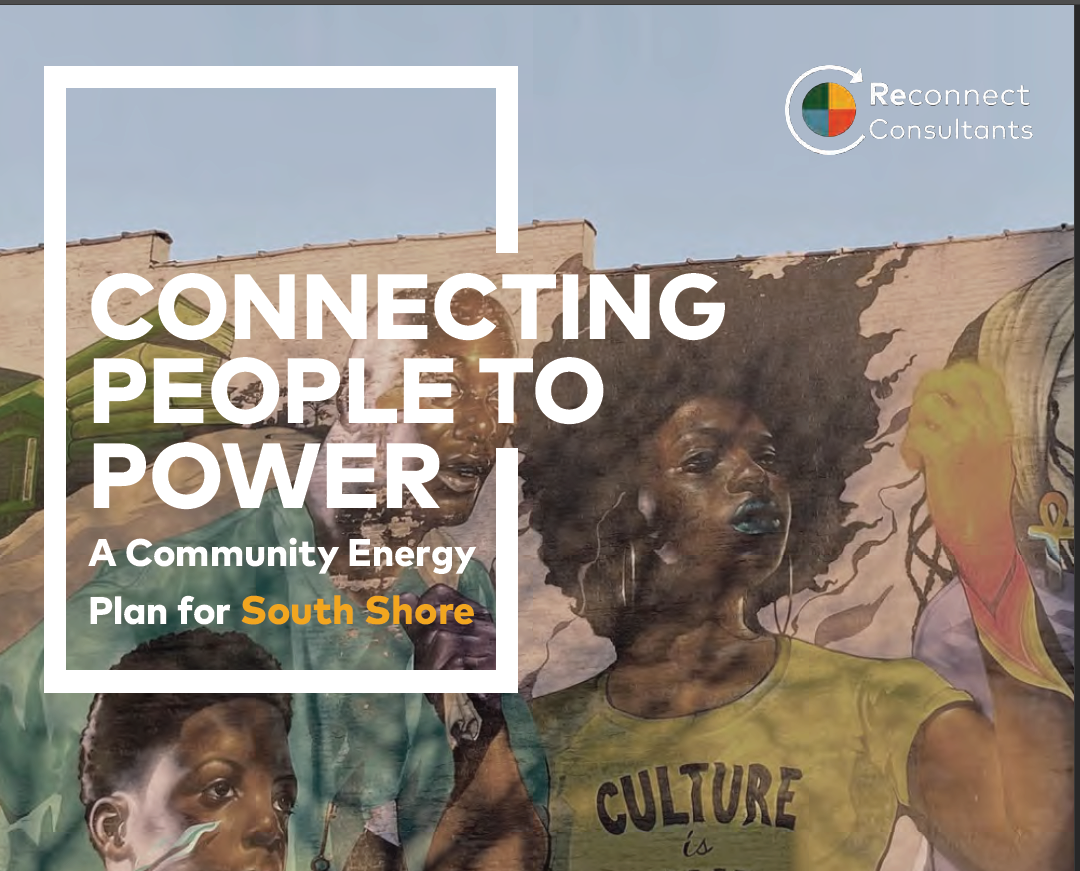
South Shore has an innovative community energy plan
South Shore is 100% walkable
as determined by the Chicago Metropolitan Agency for Planning
South Shore has 60 percent more park space than the citywide average, at 3.91 acres per 1,000 residents

South Shore boasts a
33% greater tree canopy
than the Chicago average
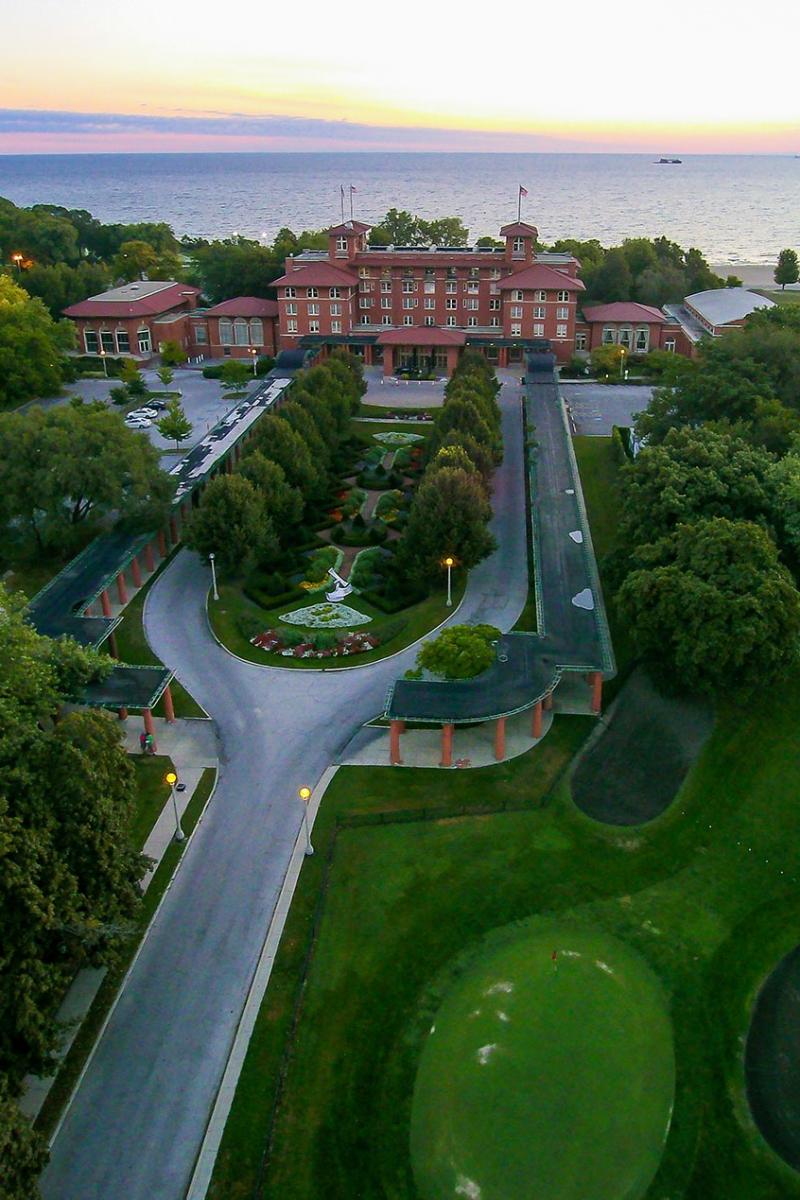
Key local factors
The natural environment of South Shore belies the standard images of an urban community landscape limited by glass and concrete. With 60% more park space than the average Chicago neighborhood (3.91 acres per 1,000 residents), we have a nature sanctuary, butterfly garden, and miles of bike trails and walking paths close to the lakefront. South Shore also boasts a tree canopy exceeding the City’s average (21.3% vs. 16%), which helps decrease our energy costs, clean our air, and mitigate storm water runoff.
South Shore is recognized as a “100% walkable” neighborhood by the Chicago Metropolitan Agency for Planning, citing “a large number of destinations--close to one another and arranged so that residents and visitors can comfortably and conveniently access them on foot." This walkability, whether for recreation or transportation, is an important factor, not just for livability, but also community wellness, public safety, and economic viability. Other planners at UIC have researched specific ways South Shore can leverage our assets for greater resilience in our energy, food systems, water and connectivity as a community.
We are proud of these assets, but need to protect our unparalleled natural resources for future generations. Engaging more residents to appreciate the value of these resources for community and personal well-being will help us all ensure and benefit from them.
STRATEGY 1
- Increase and promote public access to, and greater utilization of, public green spaces like the South Shore Cultural Center and Rainbow Park/Beach
- Work with South Shore-area Park Advisory Councils to increase access to and utilization of parks by residents
- Increase and maintain tree canopy in South Shore, with activities such as removing dead trees and planting new trees
- Support efforts to restore and preserve South Shore’s lakefront, such as efforts to reduce lakefront erosion
- Identify and engage with experts in permaculture to manage South Shore’s natural ecosystems
- Create and sustain a robust urban agricultural system by utilizing disused and abandoned vacant lots through-out South Shore
- Promote and encourage greater use of renewable energy sources
STRATEGY 2
- Transform vacant lots into usable public spaces with projects like community gardens and green spaces
- Support and promote resident and community organization-led cleanup efforts
- Create and implement a branding campaign (marquees, way finders, etc.) to promote resident use of public spaces in South Shore
- Create more wall murals and sculptures to activate public spaces by using artwork
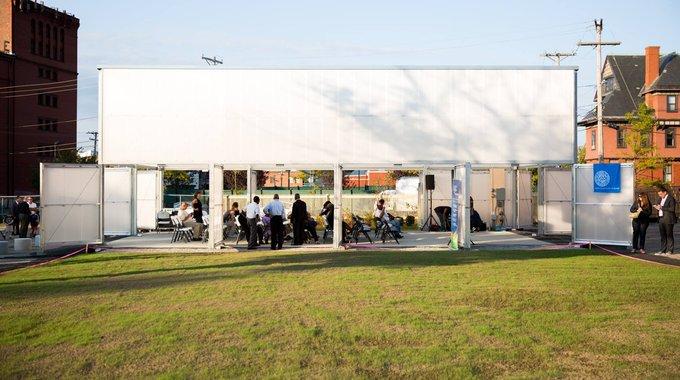
Public Safety
Public Safety Goal:
We will create an environment where residents, community organizations, businesses, law enforcement and government agencies, elected officials, and other stakeholders work together to build and maintain a peaceful South Shore neighborhood for all to live, grow, and prosper.
Our Measures of Success:
- New networks/coalitions of community-based organizations and law enforcement to improve public safety
- Accelerate current downward trend for gun-related violent crimes, particularly among youth and formerly incarcerated
- More formerly incarcerated, justice-involved, and at-risk youth participating in job and career programs
- Fewer vacant and under-utilized spaces harboring criminal activity
- Documented cases presenting successful youth-designed initiatives in violence prevention and reduction
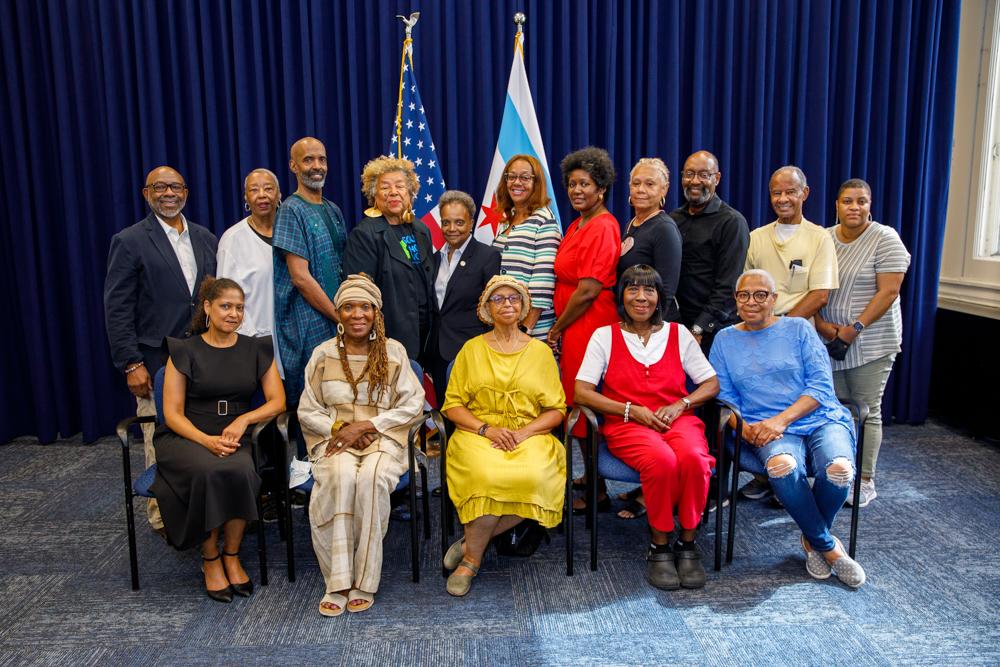
Working together, we can make South Shore safer
2022 has seen an overall decline in violent crime, but homicides are up over last year. Residents, community organizations, businesses, law enforcement and government must keep working together even more.
Once peaceful, in recent years South Shore has experienced the increased violence felt across Chicago and the US
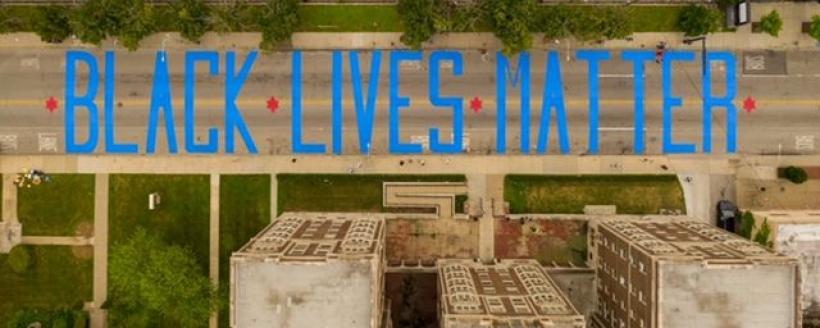
SOUTH SHORE IS HOME TO THE
FIRST Black Lives Matter (BLM) MURAL IN CHICAGO
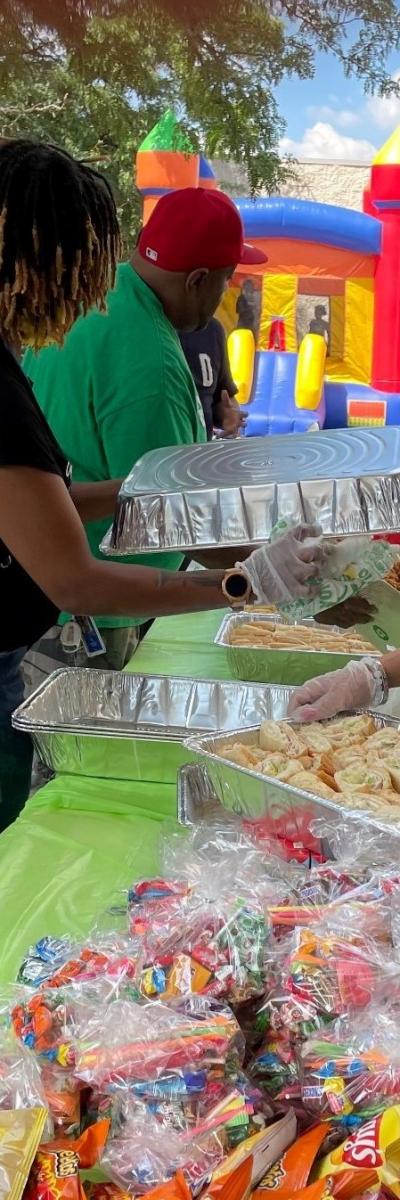
Key local factors
Similar to other urban communities throughout America, the goal of a safe and peaceful community is a commonly-shared desire of people in South Shore, the definition of this goal expressed in a variety of ways.
In recent years, our once peaceful South Shore community has been plagued with violence and suffered from the effects of poor public policy, social injustice, despair, and neglect, fueled by poor public policy, social injustice, despair, and neglect. Unwilling to passively lament this reversal of circumstances, residents, local businesses, and other stakeholders have organized to recapture South Shore, committed to restoring and revitalizing their community with intention and without delay.
For any single objective listed below to become reality would be a significant contribution toward making South Shore a neighborhood with a high level of public safety based on justice and community engagement. Melding these objectives into a combined response accelerates both the pace of implementation and the number of lives positively affected, an important component of the Quality-of-Life Plan that should become a priority for all who use and refer to it.
Having a safe and peaceful community is of paramount importance to the residents of South Shore and has been expressed in a variety of ways. Parents want a neighborhood where their children can go outside and play without fear and enjoy their childhood. Business owners want a commercial corridor that is not burdened by distressed properties or people. Residents want well-lit sidewalks, walkable streets, and inviting businesses where commerce, not crime, is the order of the day. Homeowners and renters alike want their blocks free of vacant properties, buildings overrun by purveyors of drugs and properties in extreme physical disrepair.
STRATEGY 1
- Establish a collaborative of South Shore’s community-based organizations and agencies, law enforcement and culturally-engaged activists committed to developing and implementing aggressive crime reduction initiatives
- Repurpose vacant lots and storefronts through extensive beautification efforts engaging at-risk youth and young adults
- Move aggressively against landlords and businesses harboring and enabling criminal elements
STRATEGY 2
- Engage youth as active participants in the design and execution of violence prevention and reduction programming and events
- Increase location-specific prevention programming for youth in schools, parks, and churches
- Offer viable employment and counseling options for justice-involved residents
- Provide wrap-around services for homeless youth and young adults transitioning from foster care
- Employ street teams and mobile services to engage those who will not present in traditional settings
- Provide training in effective parenting
- Provide training in trauma-informed delivery of service for all stakeholders
- Support initiatives promoting restorative justice
- Promote and support efforts to dismantle the school to prison pipeline
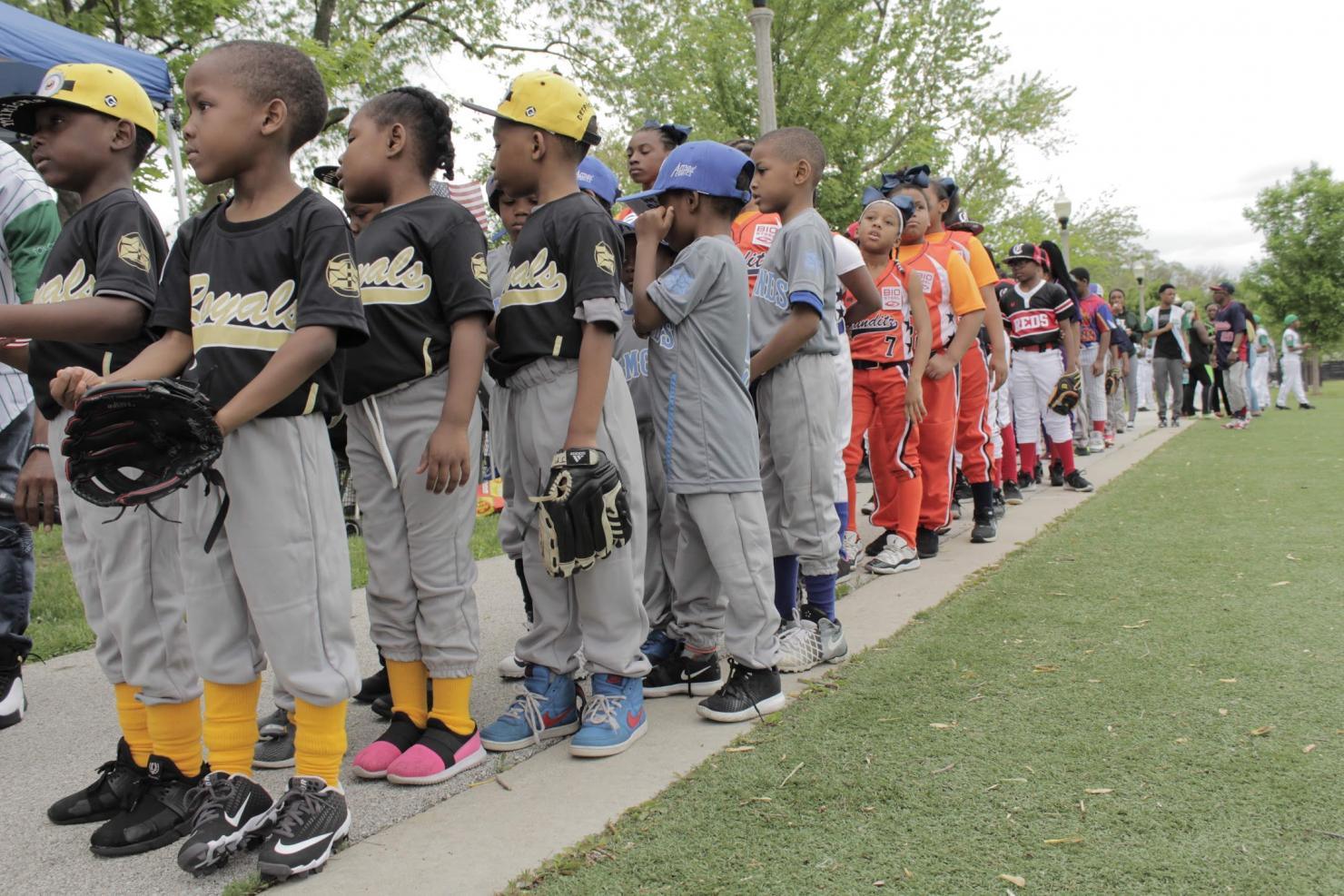
Health and Wellness
Health and Wellness Goal:
A positive culture centered on health among residents of South Shore with access to resources to address health inequities and concerns building on our existing community assets. We will focus on abundance and joy, promoting all that is positive in South Shore.
Our Measures of Success:
- Improvement in the number of South Shore residents accessing primary health care services, such as routine check-ups.
- More access to behavioral health treatment for residents of South Shore
- Increase in the number of residents participating in community fitness initiatives.
- Wider availability of holistic health services, and corresponding improvement in the number of South Shore residents who access them.
- More residents enrolled in nutrition education programs.
- Noticeable improvement in life expectancy of South Shore residents.
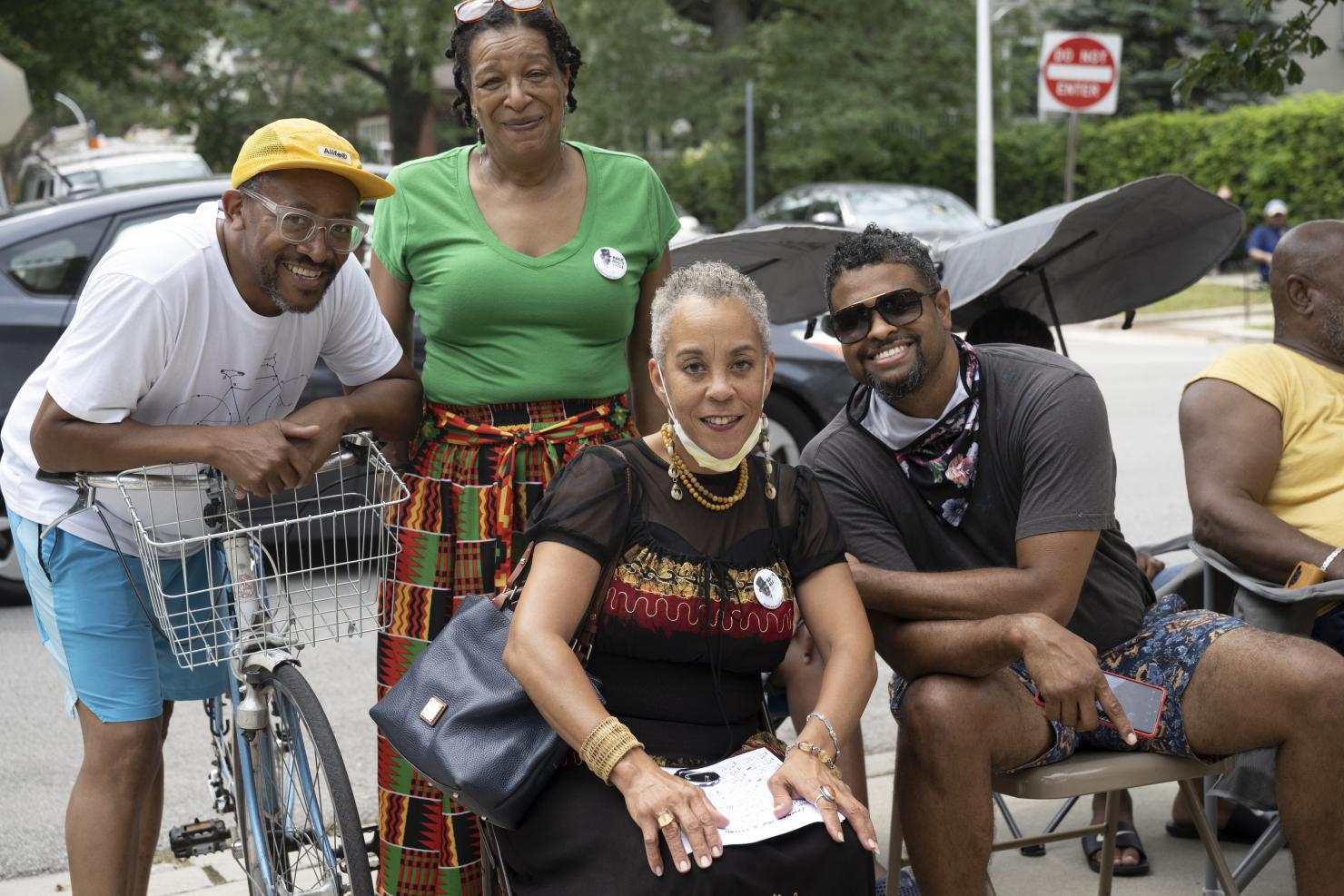
SOUTH SHORE CAME TOGETHER to respond TO COVID-19
but
hospitalization rates were 35% higher
in South Shore than the citywide rate
South Shore COVID-19 death rates were nearly 60% higher than the citywide rate
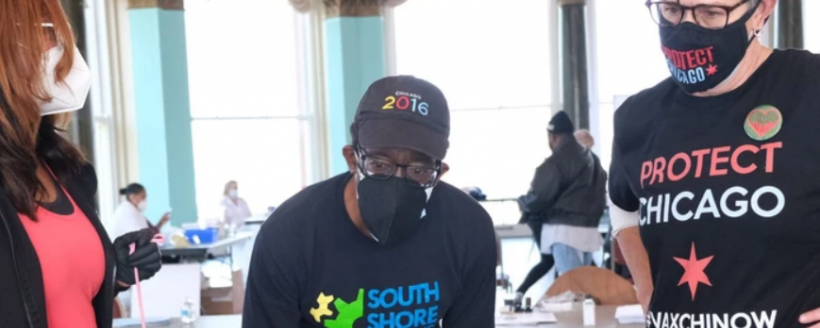
South Shore has fought hard for frsh food options
but nearly 60% of residents are more than a half-mile from the nearest supermarket

Key local factors
Organizations and residents of South Shore working to improve our health & wellness display a level of resourcefulness that knows how and when to respond to community needs, whether their efforts are fully funded or not. For example: the COVID pandemic certainly has had a tremendous effect on South Shore. COVID hospitalizations were 35% higher, and death rate 60% higher than the city average. Rather than waste time complaining, community groups and residents in South Shore responded by organizing delivery of groceries, pop-up events to offer testing, distributing hand sanitizer, masks, and other protective equipment, and mobilizing neighbors to get vaccinated.
Institutions long established on Chicago’s southeast side provide major opportunities to help coordinate and deliver improved, expand services to South Shore residents. There are two hospitals located in the community. Jackson Park Hospital and Medical Center is a 250+ bed facility offering a full range of health services to tens of thousands of area residents. Since 1912, South Shore Hospital has provided care for people from 17 southeast side neighborhoods with its 130+ bed hospital, and five primary care outreach facilities. In addition, the University of Chicago Medical Center is minutes away from South Shore via Jackson Park and Midway Plaisance.
Wellness involves more than just medical care, with access to healthy food a major factor in overall health and wellness of a community. Dedicated effort by organizations, elected officials and residents saw the opening in 2019 of the Local Market grocery store at 71st and Jeffery Boulevard, putting an end to a nearly 6-year “food desert” drought where over 60% of South Shore residents lived more than one-half mile from the nearest supermarket. The QLP outlines the following responses to improve the health and wellness of South Shore:
STRATEGY 1
- Engage with Jackson Park Hospital to create initiatives and programs suggested in their Community Health Needs Assessment
- Support South Shore Hospital in their efforts to expand services
- Coordinate with University of Chicago Medical Center on how to better serve residents of South Shore
- Identify and engage with other health care providers offering services in South Shore
STRATEGY 2
- Host public events in various parts of South Shore to promote physical, mental, and emotional health
- Collaborate with mental health partners to create and implement a plan addressing the specific mental/emotional health needs of a predominantly Black, urban community like South Shore
- Engage and collaborate with schools and youth-centered organizations to access the scope of mental/emotional health needs of youth in South Shore and develop initiatives and programs to address those needs
- Engage and collaborate with senior long term care facilities and senior-centered organizations to assess the scope of mental/emotional health needs of seniors in South Shore, and develop initiatives and programs to address those needs
- Integrate arts & cultural programming in South Shore with initiatives and programs addressing mental/emotional health
- Host public events to promote the benefits of physical activity and enjoyment of natural spaces
STRATEGY 3
- Support and increase access to year-round farmers’ markets in various parts of South Shore
- Identify and collaborate with potential partners to open a new grocery store in the area
- Engage with organizations like Top Box/Cook County-Chicago to inform residents of the availability of low-cost grocery delivery services
- Work with primary health care providers, senior care facilities and institutions, schools, and community groups to promote healthy eating habits
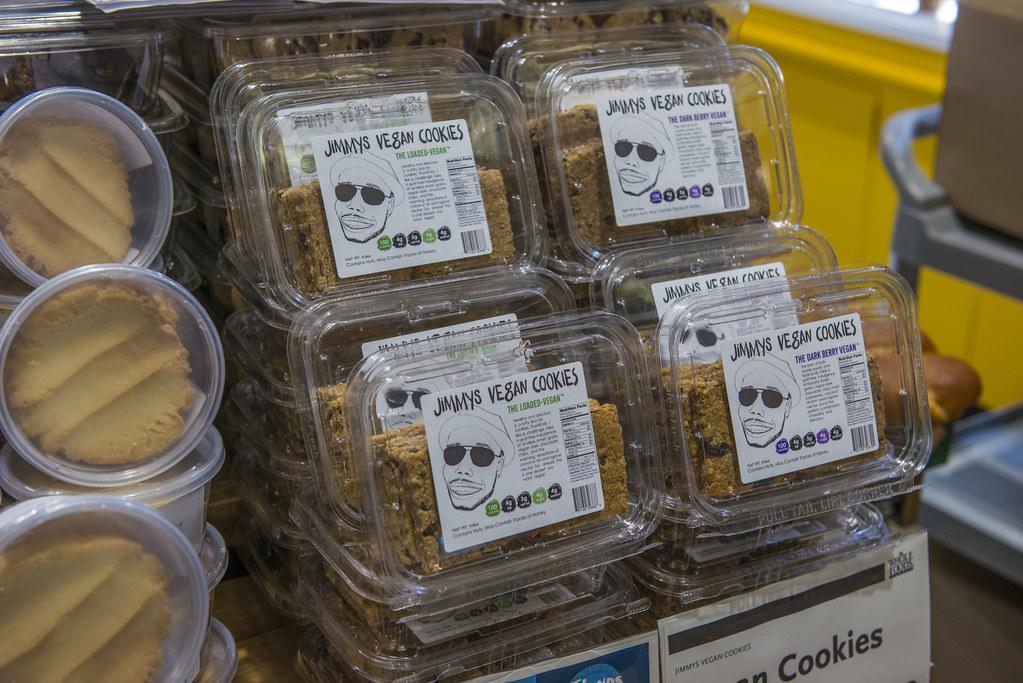
Cooperative Member-Owned Affordable Healthy Grocer
PLAN STRATEGIES ADVANCED THROUGH THIS PROJECT INCLUDE
Economic Development
- Transform South Shore into a Black Business Arts & Entertainment District/Corridor
- Seed South Shore Fund
,to provide seed money and operational funding to businesses looking to move or start-up in South Shore coop - Provide “industry-specific” entrepreneur education and training opportunities, such as supporting business owners with creating business plans, theory of change
Health & Wellness
- Support and increase access to farmers’ markets (year-round and across South Shore)
- Bring in a new grocer to service South Shore
- Work with local primary care physicians, schools, and community-based partners to support efforts to increase the positive healthy habits of South Shore residents
60% of South Shore residents were more than a half-mile from the nearest supermarket. Layered onto that is the community's poverty rate at 30%, and we can see how residents have limited if any options when it comes to affordable healthy groceries. South Shore residents eat fewer fruits and vegetables, and engage in less physical activity, and drink more soda than the average Chicagoan. This has led to many health and diet-related issues, that contributed to the higher death rates during the ongoing COVID-19 pandemic.
A cooperative member-owned grocer would allow residents to not only allow residents to participate as owners but also decide on what kind of healthy foods are available and what outcomes are deemed as a success through this venture: high-profit margins or better health outcomes for residents. The inability to create a high-profit margin in the current economic environment has meant that there has been little to no interest from large chain grocery stores to come to South Shore. The Local Market, the only current large grocer in South Shore, opened its doors after a 6-year organizing campaign. A co-op does not need to have high-profit margins to be deemed a success and could provide ownership or equity opportunities for community residents.
Arts, Culture & Entertainment
Arts, Culture & Entertainment Goal:
South Shore will have a thriving and culturally relevant arts district which we will create by supporting arts-related development projects, increasing awareness, participation, and expression in the arts, hosting annual events, and fostering and supporting a network of South Shore artists.
Our Measures of Success:
- Successful creation of a South Shore Arts District.
- Successful creation of South Shore “arts-focused” magazine.
- More public arts and cultural events hosted in the community.
- Increase in the number of cultural and entertainment projects in South Shore.
- Higher levels of attendance seen for arts & culture events hosted in the community.
- More visitors from outside the community attending arts & culture events hosted in South Shore.
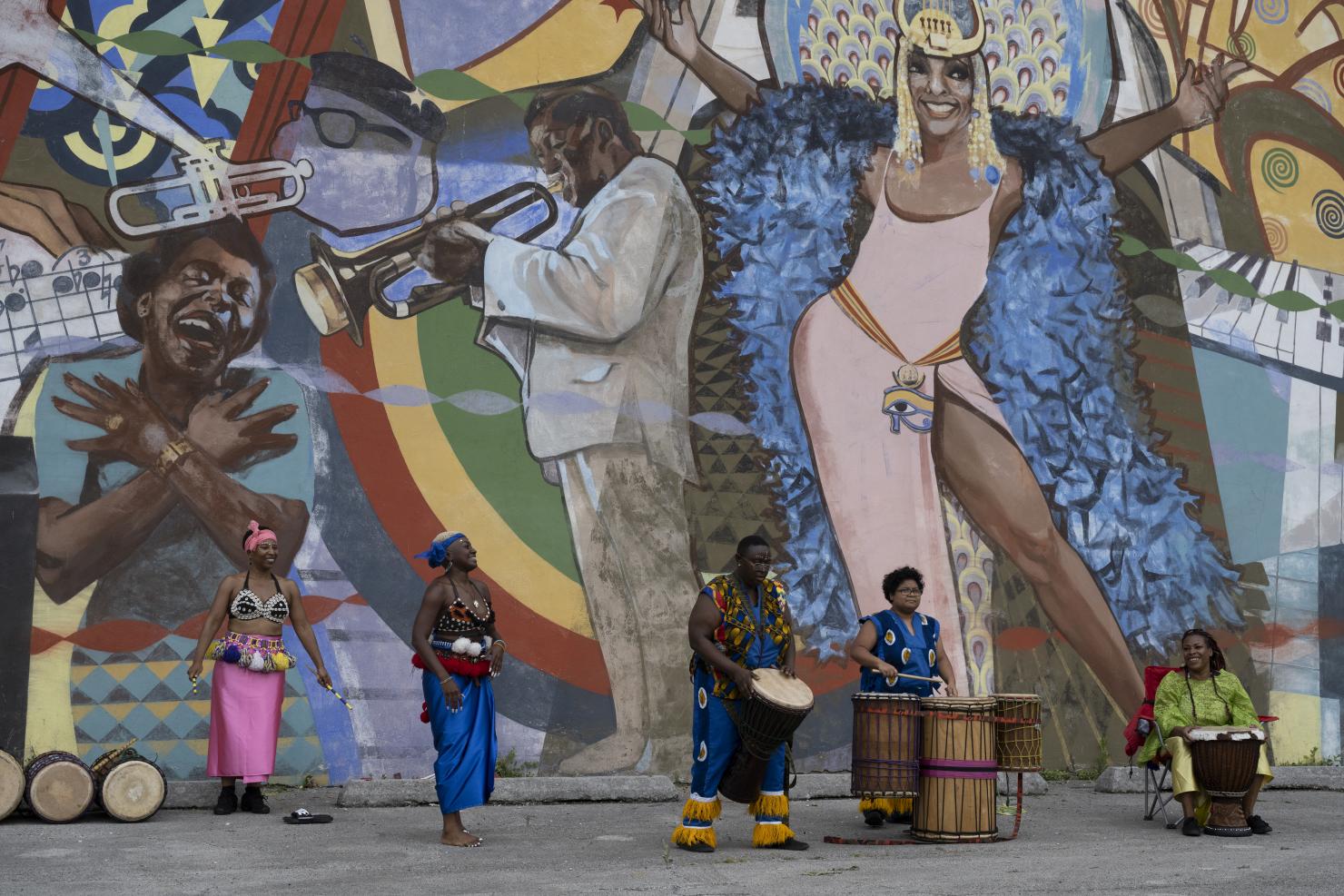
The Quarry Event Center: "South Shore's Premier Event Space and home to Friday Night Jazz."
the Cultural Soul Coast
South Shore serves as an entry point to and from the city center and other communities for Black Excellence in the arts
South Shore is quickly becoming a destination for film, events, and performances
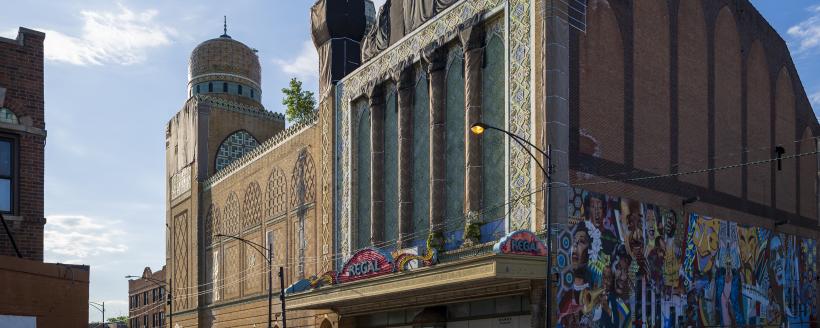
The Regal Avalon Theatre is proposing a
state-of-the-art film and television production campus and entertainment district
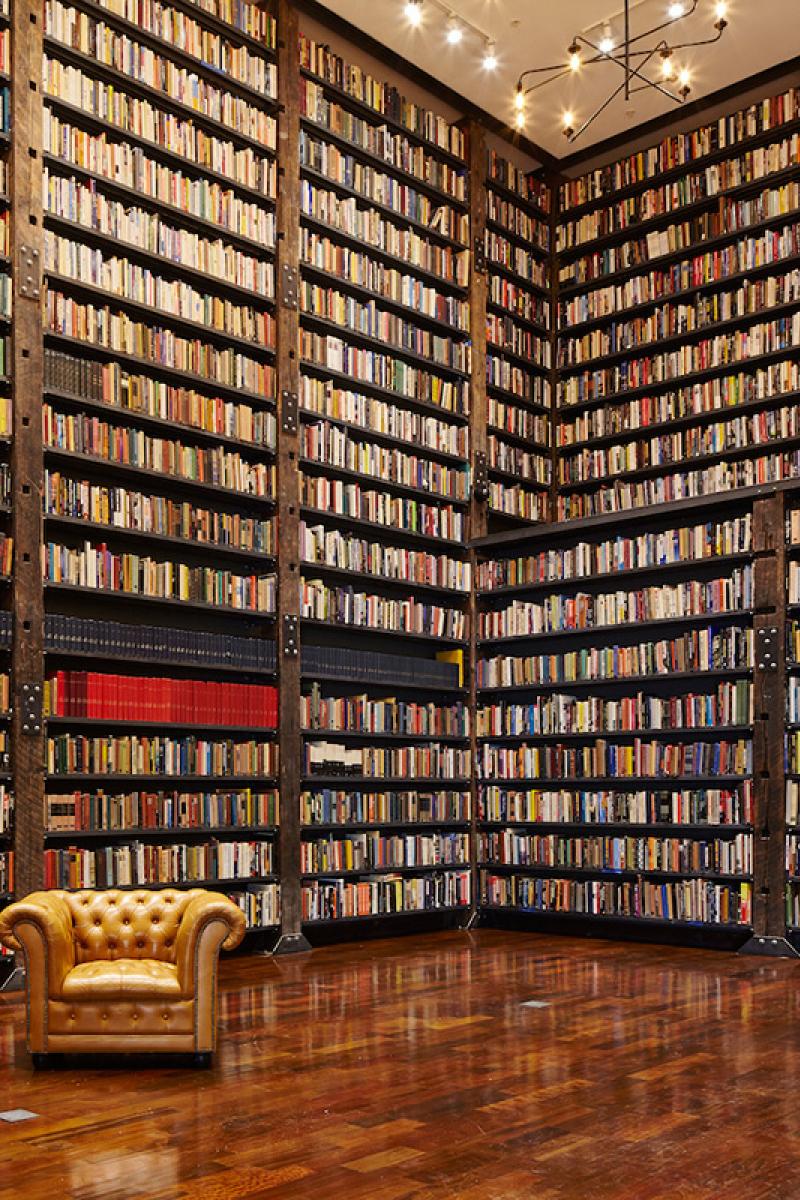
Key local factors
South Shore has arts, culture & entertainment in its DNA. Internationally known musicians like Bo Diddley, Ramsey Lewis, and Kanye West, award-winning writers, renowned visual artists, and other creative professionals have called South Shore their home. Known as Chicago’s Soul Coast, the community is home to cultural institutions like the Stony Island Arts Banks, The Quarry Event Center, the Sisters In Media Arts Center, and the South Shore Cultural Center. Inner City Entertainment is a “social enterprise” with plans to build a seven-screen 350-seat movie theater with on-location dining service. Wall murals done by area artists adorn many buildings in the neighborhood; sculptures and other art installations can be found in parks and other public spaces.
Art and culture can serve as a conduit to connect the people of South Shore to their neighbors, their community, providing a platform to present the community as a Center for Black Excellence. As we emerge from COVID pandemic restrictions, we already begin to see a resurgence of arts & culture focused projects incorporated into the programs of community-based organizations.
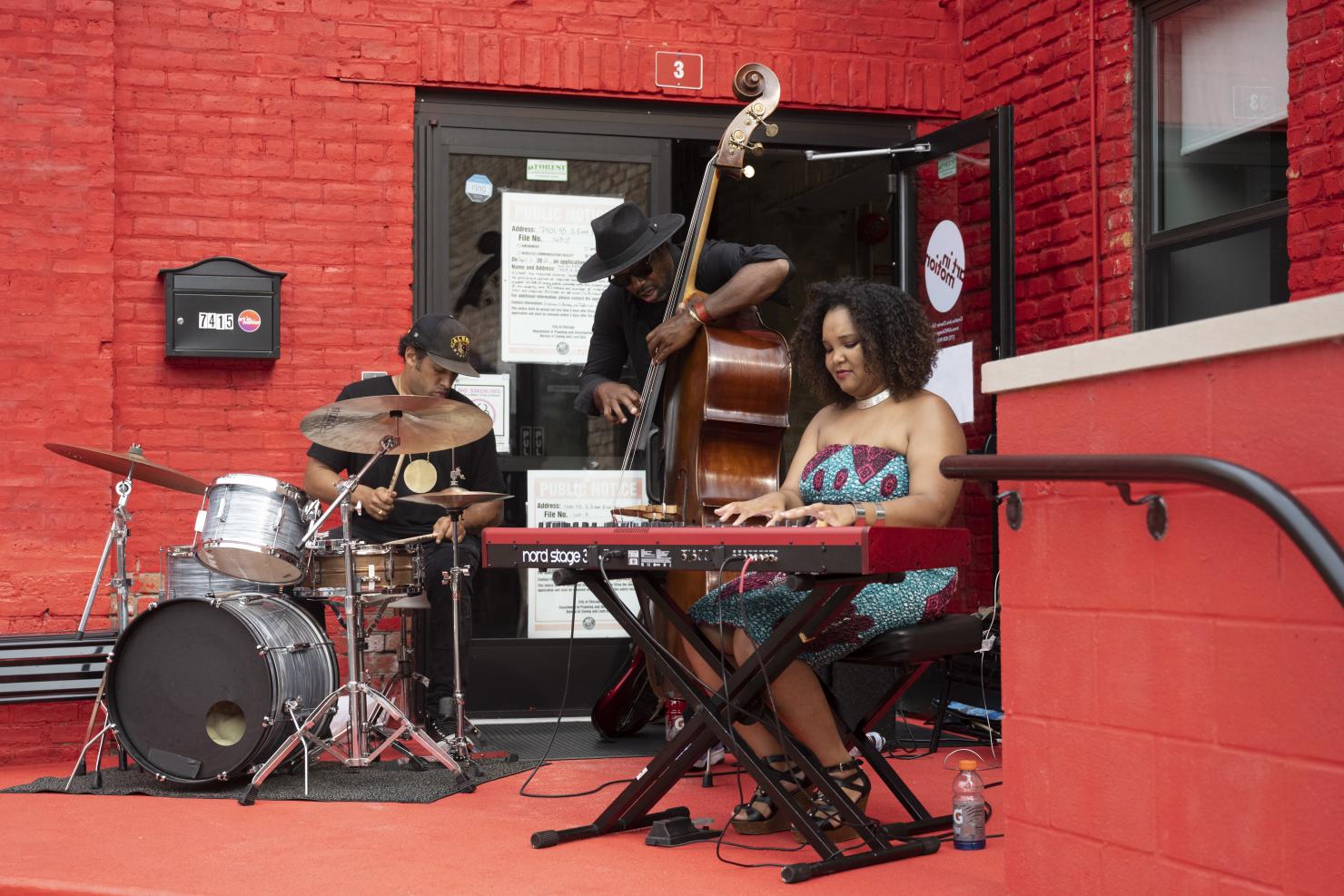
STRATEGY 1
Promote South Shore as a vibrant “Arts & Culture District”
- Organize and host live performances and cultural events.
- Coordinate, promote, and facilitate experiences drawing visitors to South Shore.
- Install arts-related marquees at strategic entries in South Shore.
- Expand, support, and promote community arts education programming for students and adults.
- Support and promote independently organized community arts events.
- Create and implement music series like the Back Alley Jazz Fest, hip hop music events, and events featuring known artists.
- Reestablish the South Shore Jazz Festival at the South Shore Cultural Center.
- Support and promote artisan incubators in the area.
- Support the creation of more wall murals and art in public spaces.
STRATEGY 2
Create the conditions for Arts & Culture to serve as an economic engine for South Shore
- Create an “arts hub” venue- a location used to host various arts events: exhibitions, plays, opera, concerts, etc.
- Support real estate acquisition and development projects focused on arts, culture & entertainment.
- Establish both spaces and programs for art collectives and artist residencies.
- Create a South Shore arts magazine generating revenue through paid ads.
- Develop and promote a network of artists & creatives in South Shore.
- Develop and implement an arts & culture plan for South Shore.
South Shore Non-profit Arts Incubator and Gallery
OTHER PLAN STRATEGIES ADVANCED THROUGH THIS PROJECT INCLUDE
Education
- Coordinate and increase academic-focused Out-of-School Time (CPS) activities through My CHI.My Future.
- Bring Parent University and/or other parent engagement and leadership programs to South Shore
- Expand or launch new computer literacy programs
- Integrate arts and cultural opportunities with schools
Economic Development
- Create a community center/gathering and office space
- Transform South Shore into a Black Business Arts & Entertainment District/Corridor
Resident Engagement
- Creation of South Shore Resident Community Fund to fund local neighborhood projects administered by area council leadership. Residents will be able to connect with each other and support the creation of arts projects that benefit their specific blocks and community area.
Health & Wellness
- Host community events that promote physical, mental, and emotional health
- Integrate arts & cultural programming with physical, mental, and emotional health
Community Stewardship & Beautification
- Increase the use of renewable energy
- Utilize art in activating public spaces through murals
South Shore needs spaces for artists to showcase their work, non-profits to have office space and offer programming integrated into the arts, and for a space for residents to come together with teaching artists to learn, explore and create. This space would support the arts ecosystem in South Shore, support educational and mental health goals, as well as drive entrepreneurship through the arts.
This project would align with Arts, Culture & Entertainment, Education, and Economic Development issue areas laid out in this plan. This incubator/gallery would:
- Utilize and support real estate acquisition and development projects focused on arts, culture, and entertainment.
- Establish art collectives or residencies, both spaces, and programs.
- Create an arts venue hub: a property or several properties that can be used to host various arts events: exhibitions, plays, opera, concerts, and other cultural events.
- Develop a network of creatives and artists in South Shore.
- Coordinate and facilitate South Shore experiences that will draw visitors into the community.
- Support artisan incubators.
- Support and expand community arts education programming for both residents and students: Muntu Dance Theatre, ETA Creative Arts Foundation, visual arts, etc.
- Support independent community arts events.
- Facilitate the creation of a new South Shore cultural plan.
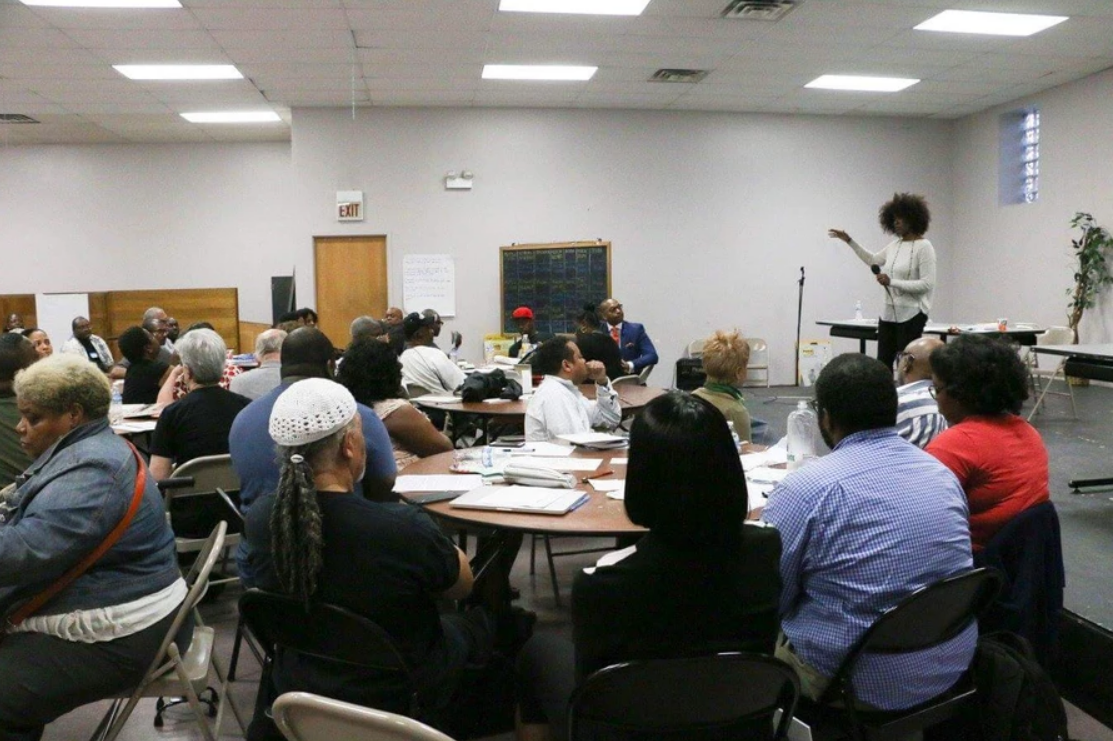
The Planning Process
It is hoped those who review this South Shore Quality-of-Life Plan for information will also carefully consider the role they can play in implementing the strategies and ideas proposed, and join its creators in turning this vision into a reality lasting for generations.
For nearly the past two years, the Steering Committee has conducted community forums, held one-on-one meetings with residents, business owners, representatives of non-profit and faith-based organizations, and elected officials, and planning sessions to gain insights into what people in South Shore would like to see our community look like within the next five years. Restrictions imposed during the COVID pandemic required planners to look beyond typical methods to organize, curate information and data, and engage with stakeholders, formidable tasks even under normal circumstances. The commitment and dedication of those involved, together with the active interest of those in the community, allowed planners to overcome any communications obstacles with the use of online virtual platforms like Zoom, and active communication via email.
The information, insights, and recommendations contained in the South Shore Quality-of-Life Plan represents the efforts of literally hundreds of residents, business owners, organizers, and other stakeholders committed to making South Shore a viable, vibrant community. The process of transforming South Shore into a Center for Black Excellence is inclusive, welcoming all within this diverse community to participate in the creation of forums, initiatives, programs, and public spaces necessary to craft this vision.
Focusing on the eight primary areas-of-concern outlined — resident engagement, economic development, education, housing, community stewardship & beautification, health & wellness, arts/culture & entertainment, and public safety — the QLP provides a comprehensive analysis and blueprint for specific measures that can be employed to meet the present challenges South Shore faces, along with building the foundation for future revitalization and sustainability. It is, by no means, a proposal cast in stone, but rather a dynamic, ongoing process surely to expand and improve once various aspects of the plan are implemented and come to fruition.
We are incredibly proud of the work, passion, and thoughtfulness informing the creation of this proposal, and pledge to continue our engagement with the stakeholders, residents, and allies of the South Shore community making a valuable and much-appreciated contribution.
Convening Agencies: The South Shore Compact
The South Shore Compact are the co-conveners for the Quality-of-Life Planning Process in South Shore. The Compact includes three partners:
The Neighborhood Network Alliance is a community engagement organization that trains neighborhood leaders to tap into the human capital on their block and equip them with the resources to create neighborhood networks.
The South Shore Chamber of Commerce strengthens and supports business corridors and small businesses by empowering members with effective training, technical assistance, and access to the private sector and governmental resources.
The South Shore Works Planning and Preservation Coalition is a community-based organization dedicated to the revitalization and restoration of the South Shore community. Its primary strategy is to harness talent and expertise in the neighborhood to participate in the design and implementation of a strategic plan.
Together, these partners of the Compact cover the South Shore community in a comprehensive way. The Neighborhood Network Alliance engages with residents; the South Shore Chamber of Commerce engages with businesses, and the South Shore Works Planning & Preservation Coalition engages with nonprofit organizations in the community.
LISC Chicago
With residents and partners, LISC forges resilient and inclusive communities of opportunity across America—great places to live, work, visit, do business and raise families. Since 1979, LISC has invested $20 billion to build or rehab 400,500 affordable homes and apartments and develop 66.8 million square feet of retail, community, and educational space. For more information, please visit lisc.org/chicago.
Embedded in LISC’s founding, and strengthened over the last two decades, we are committed to comprehensive community planning. This planning process is essential to building the local capacity to effectively connect to the right resources to achieve fundamental change and long-lasting results in our communities. In the late 1990s, Local Initiatives Support Corporation. with leadership support from the John D. and Catherine T. MacArthur Foundation, created the New Communities Program (NCP), a groundbreaking, bottom-up, comprehensive community planning effort in which LISC supports the development of Quality-of-Life Plans (QLPs) by community leaders and residents in Chicago neighborhoods.
As of 2022, 29 QLPs have been created, garnering more than $1B in new investments aligned in support of community visions in neighborhoods across Chicago.
The South Shore Chamber, Neighborhood Network Alliance, South Shore Works and LISC thank the major funders of the 2020-2022 Quality-of-Life Planning process:
The Chicago Community Trust
US Department of Housing and Urban Development
Data Sources & References
Our Community
- CMAP Community Snapshots
- Institute for Housing Studies at DePaul University
- Chicago Health Atlas
- The To&Through Project, The University of Chicago
- The University of Chicago, Housing Study
Photo Credits
- City of Chicago
- Chicago Tribune
- Block Club Chicago
- LISC
- Marc Monaghan
- Maxwell Evans
- The Neighborhood Network Alliance
- TGR Designs
- Rebuild Foundation
- Sisters in Cinema
- South Shore Chamber of Commerce
- South Shore Works
- University of Chicago
- Walter Mitchell
For More Information:
The South Shore Compact
1818 E. 71st Street
Chicago, IL 60649
United States
LISC Chicago
10 S. Riverside Plaza, Suite 1700
Chicago, IL 60606
United States



































